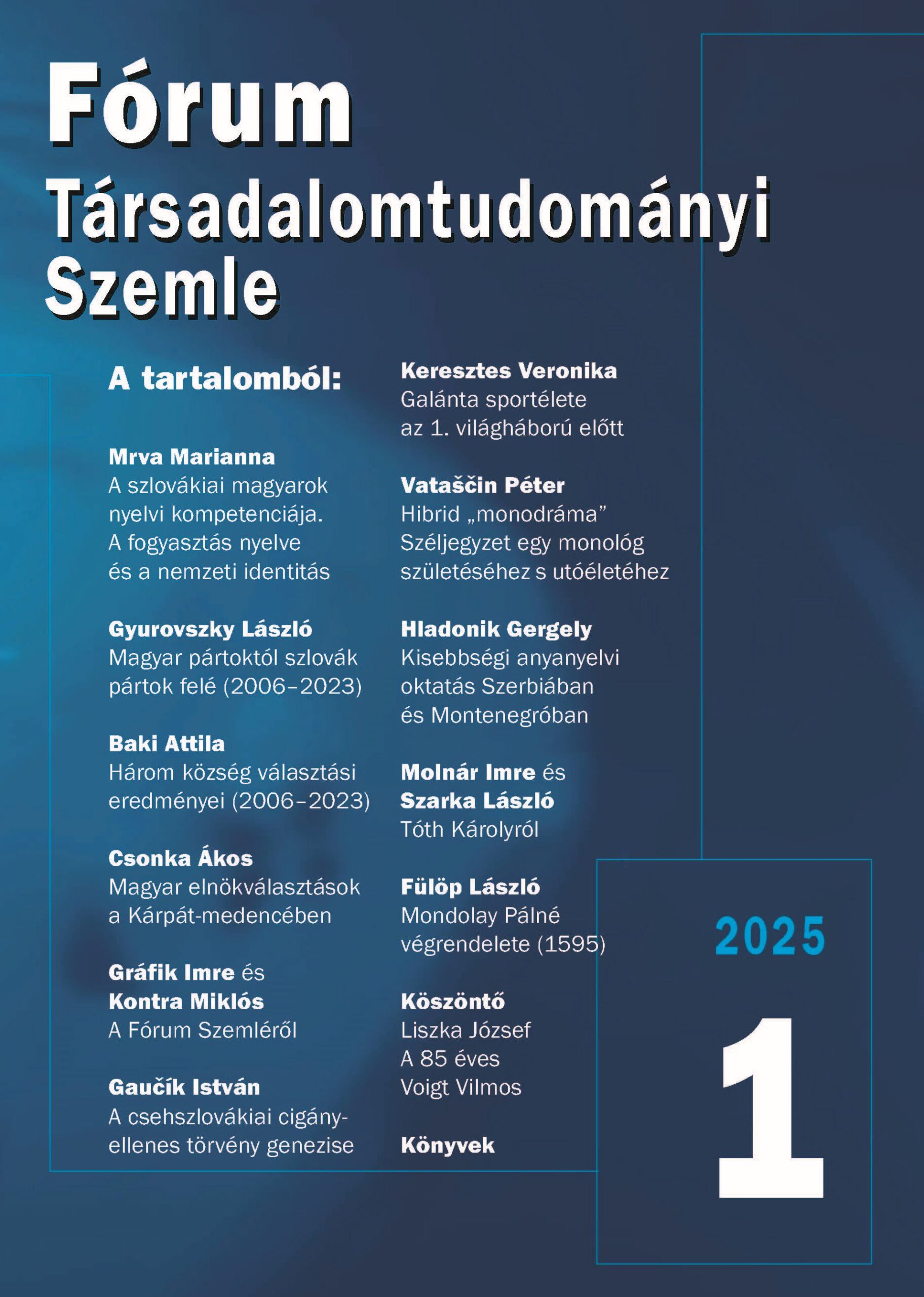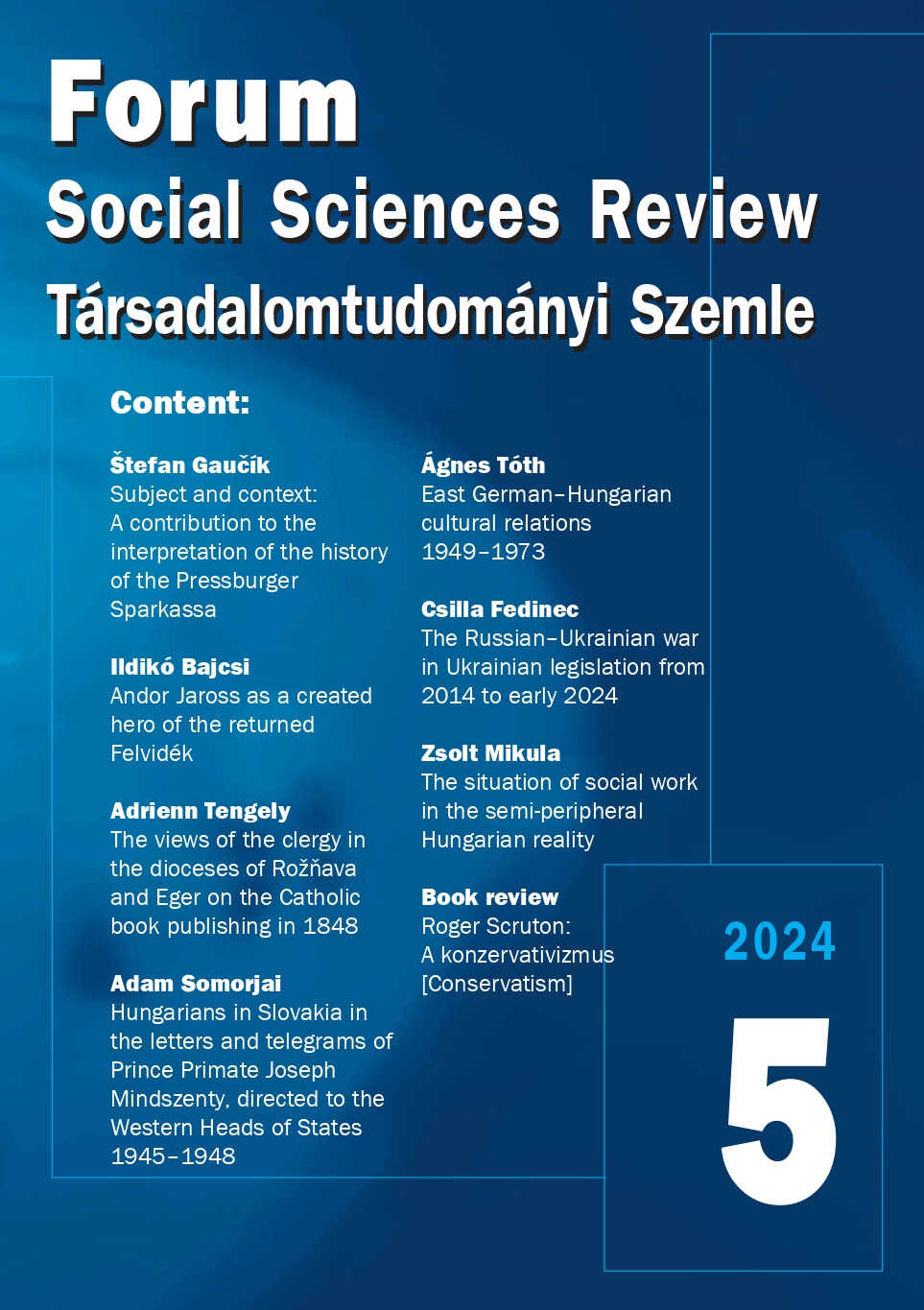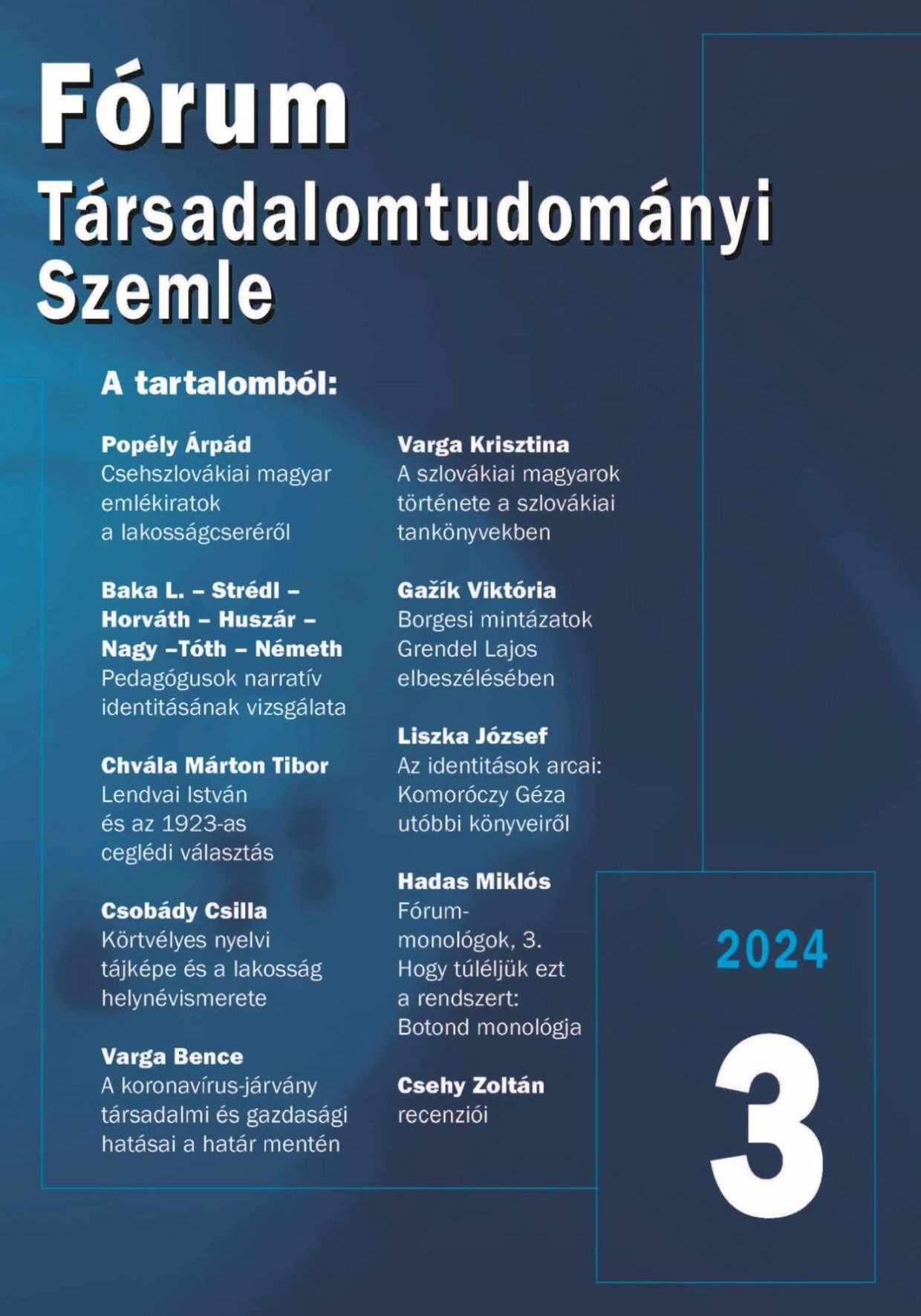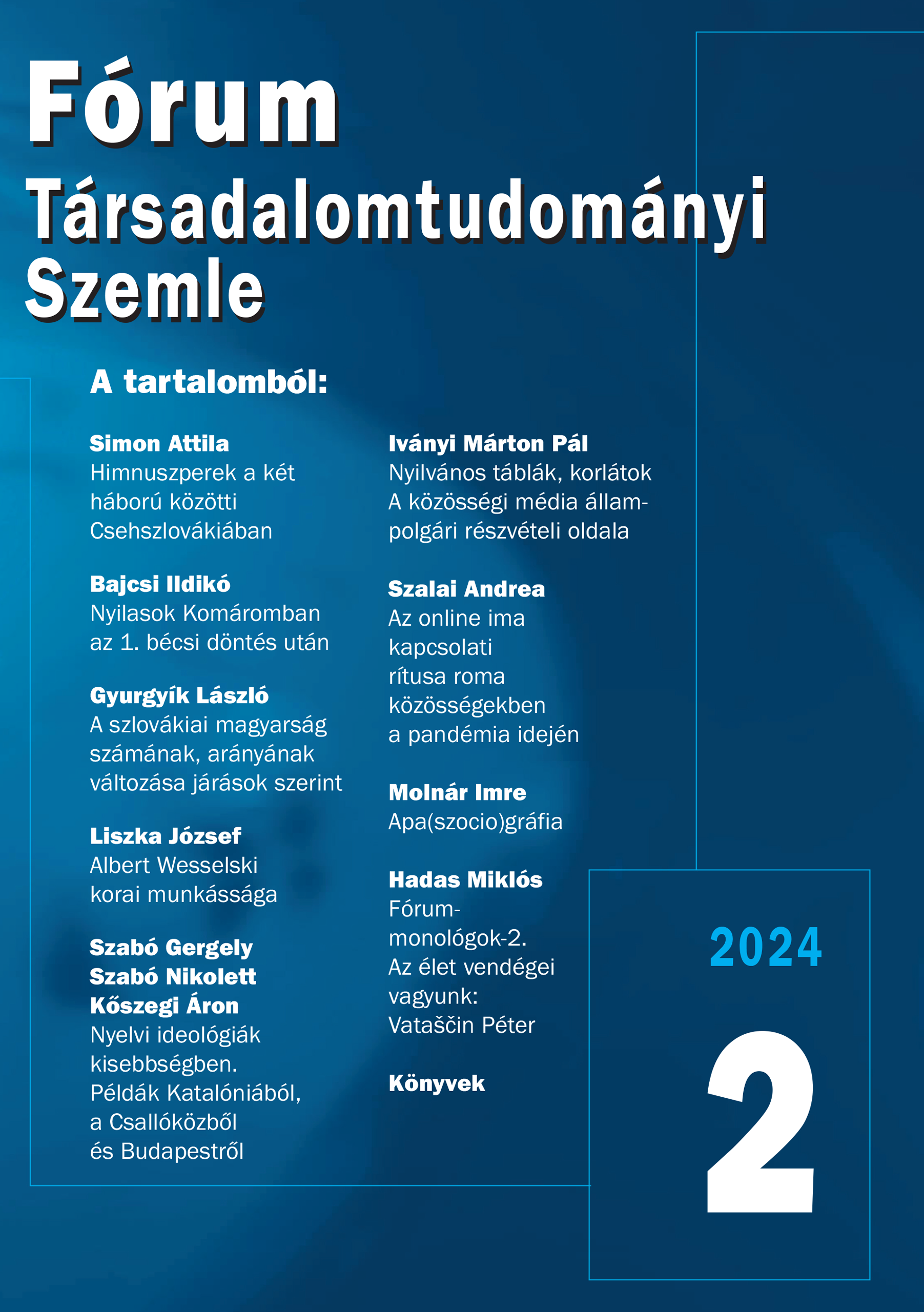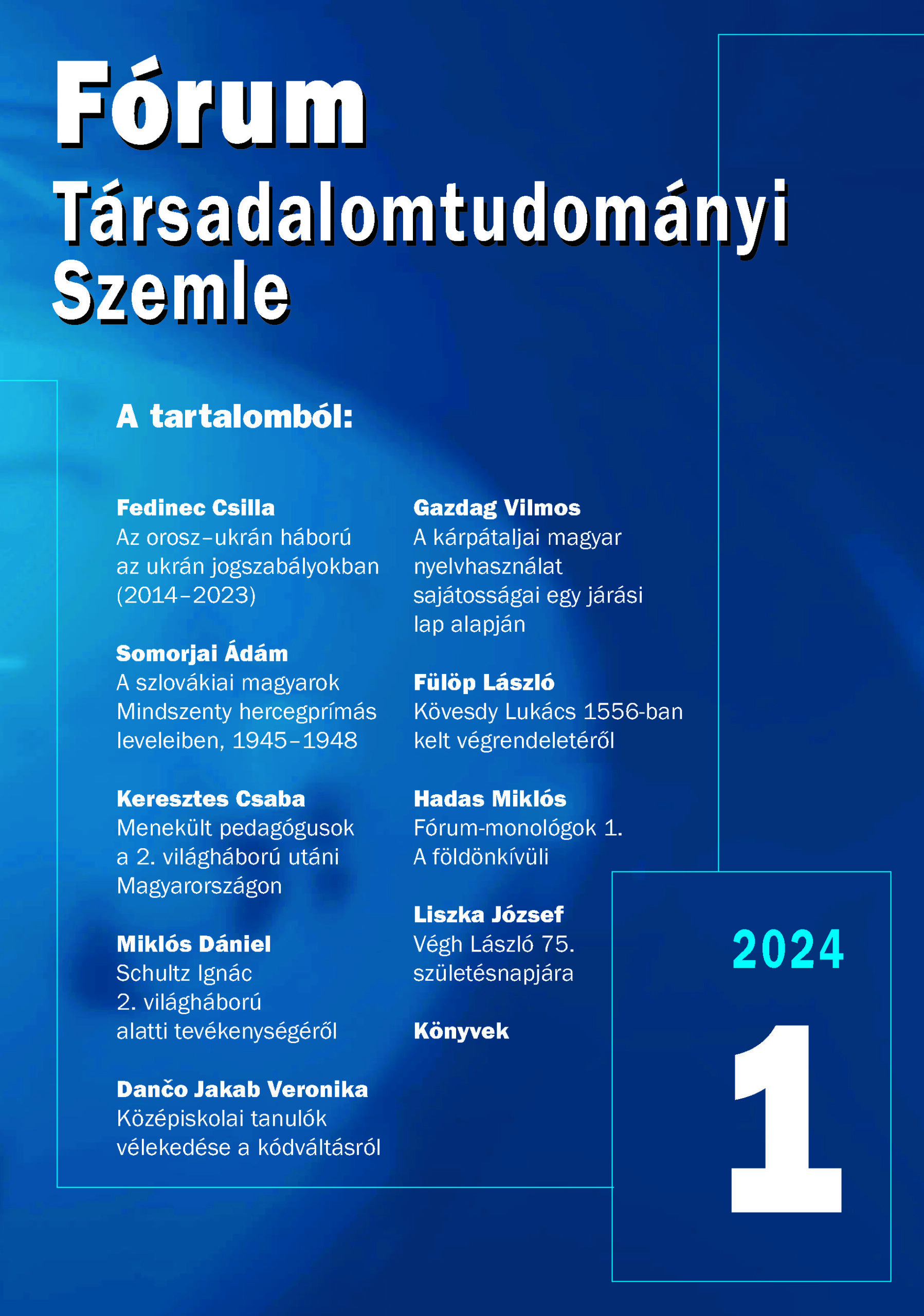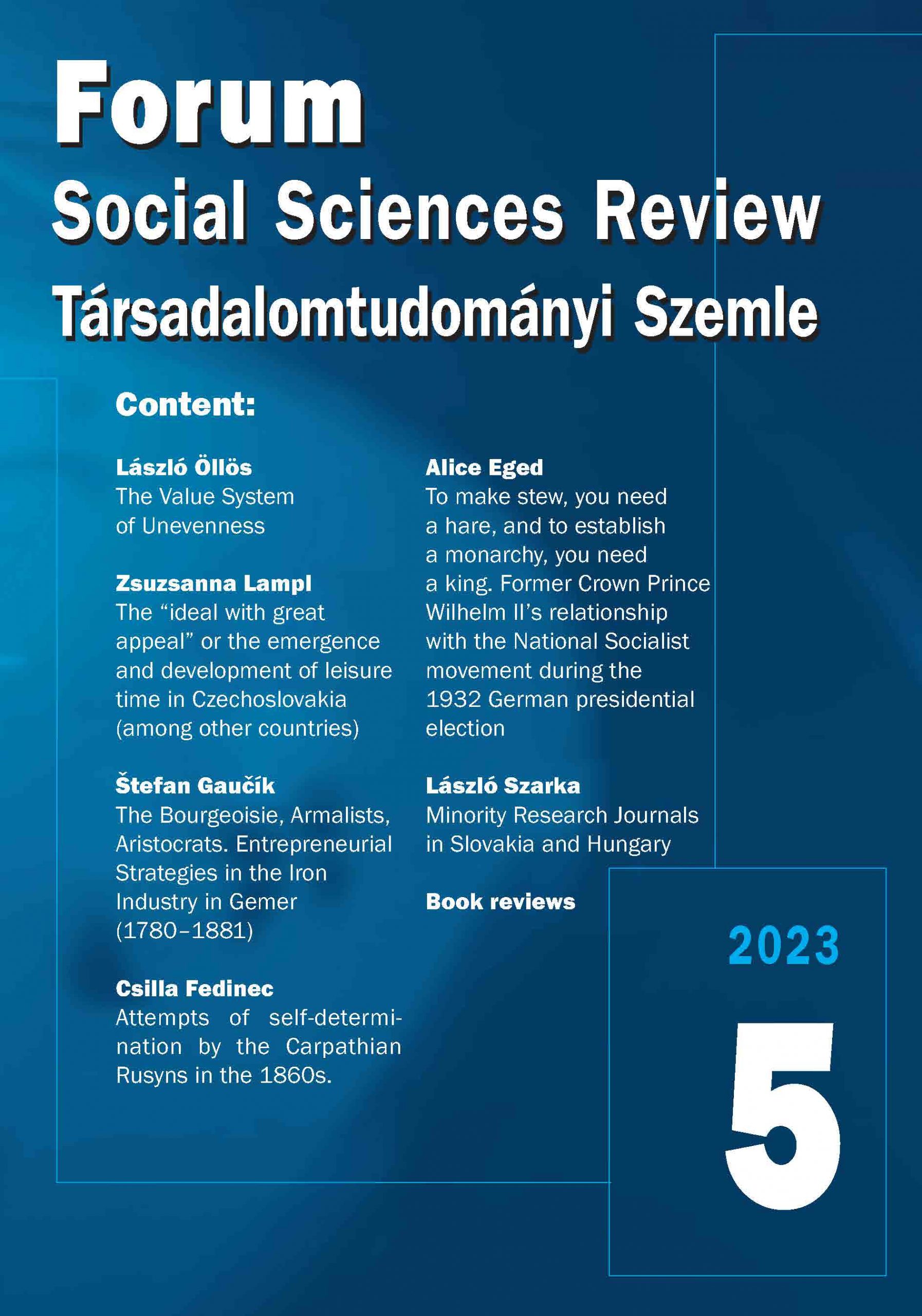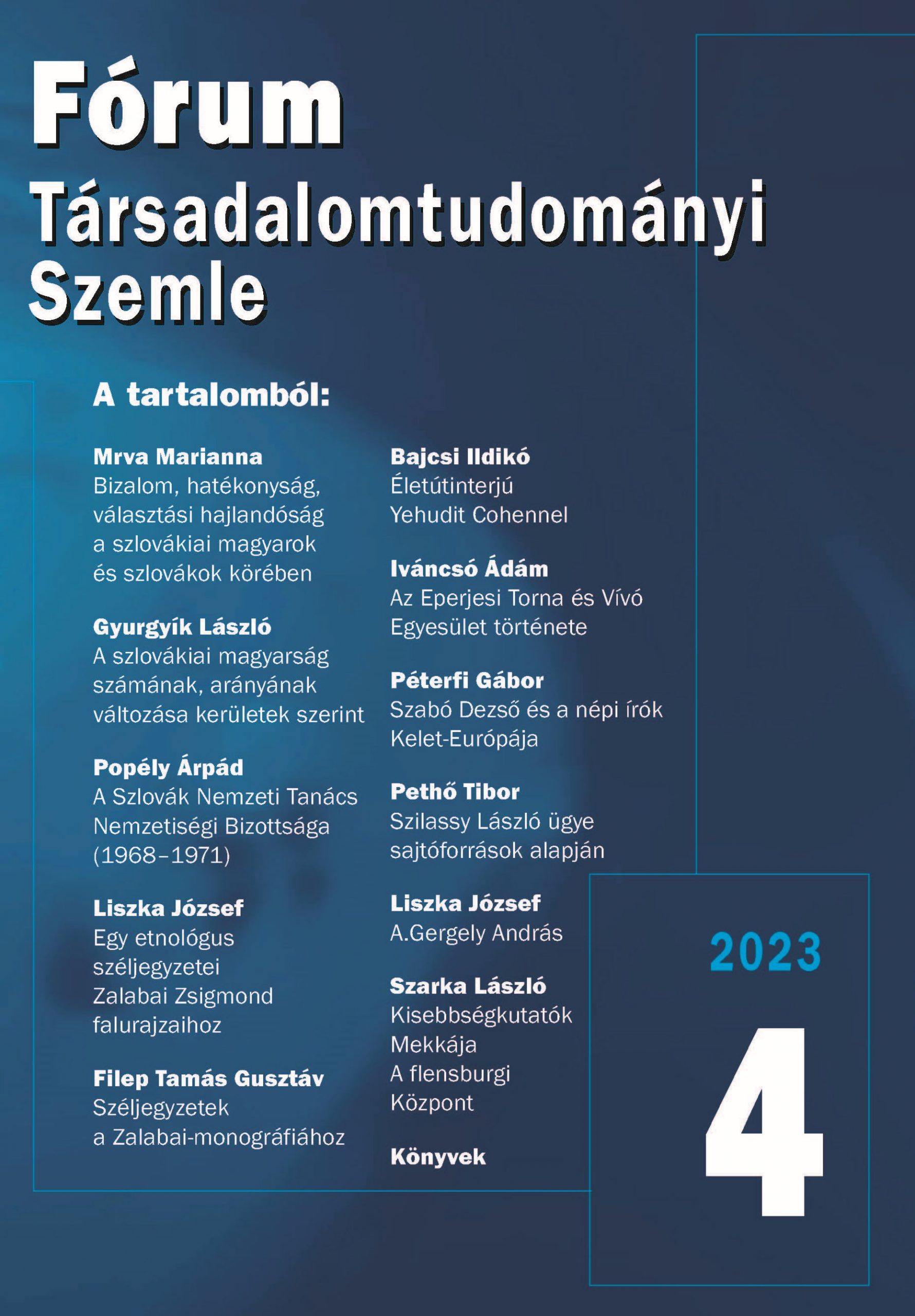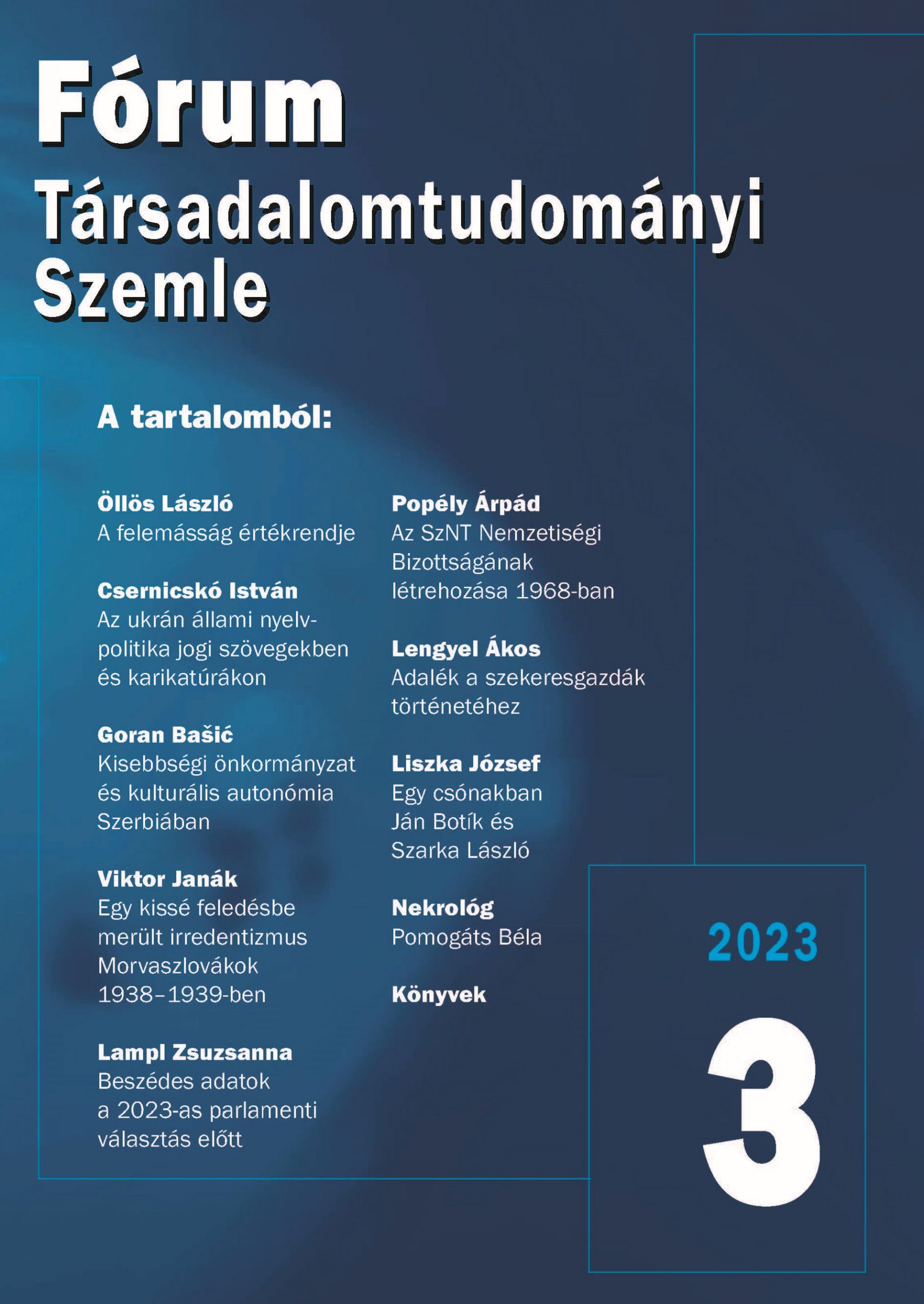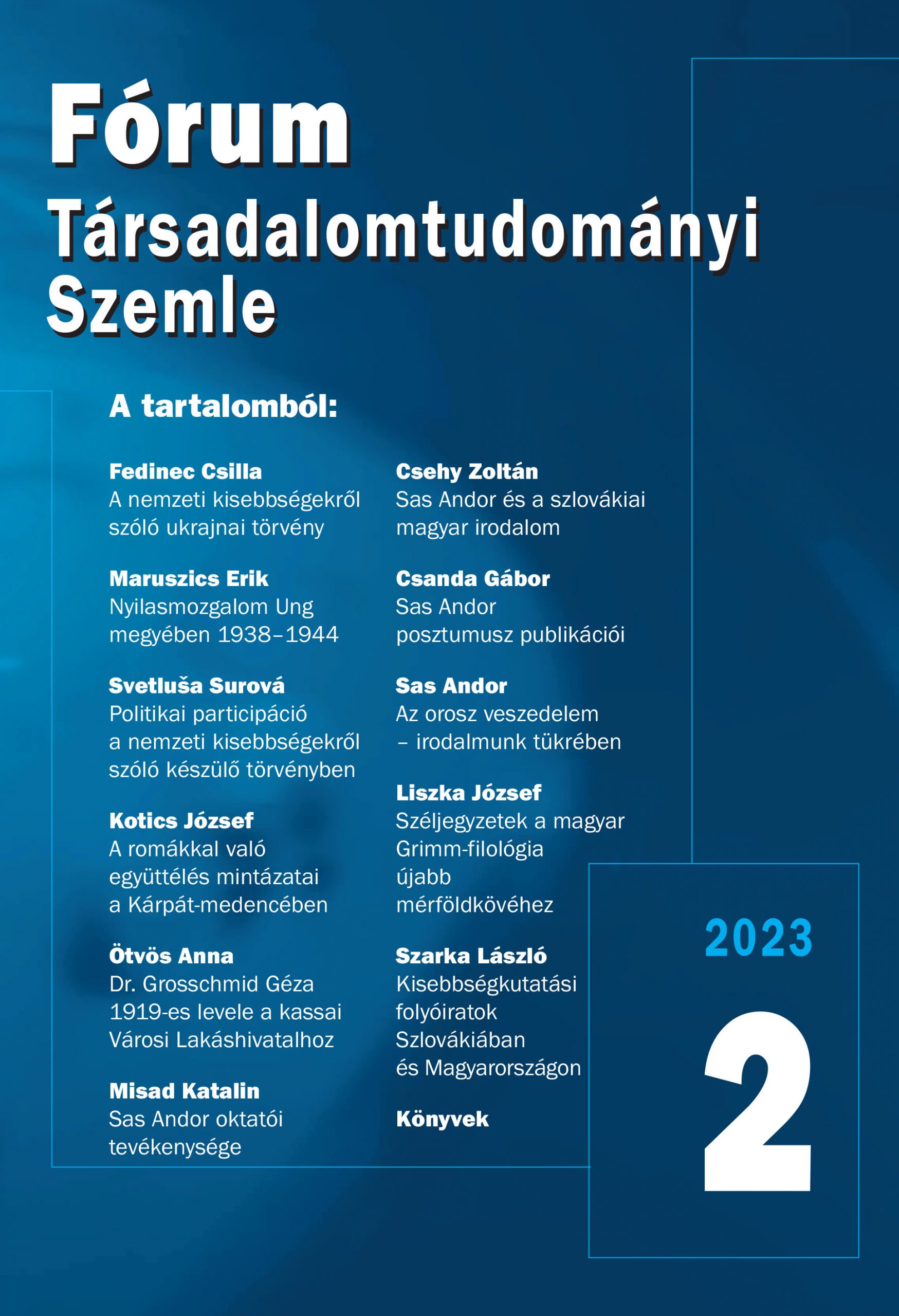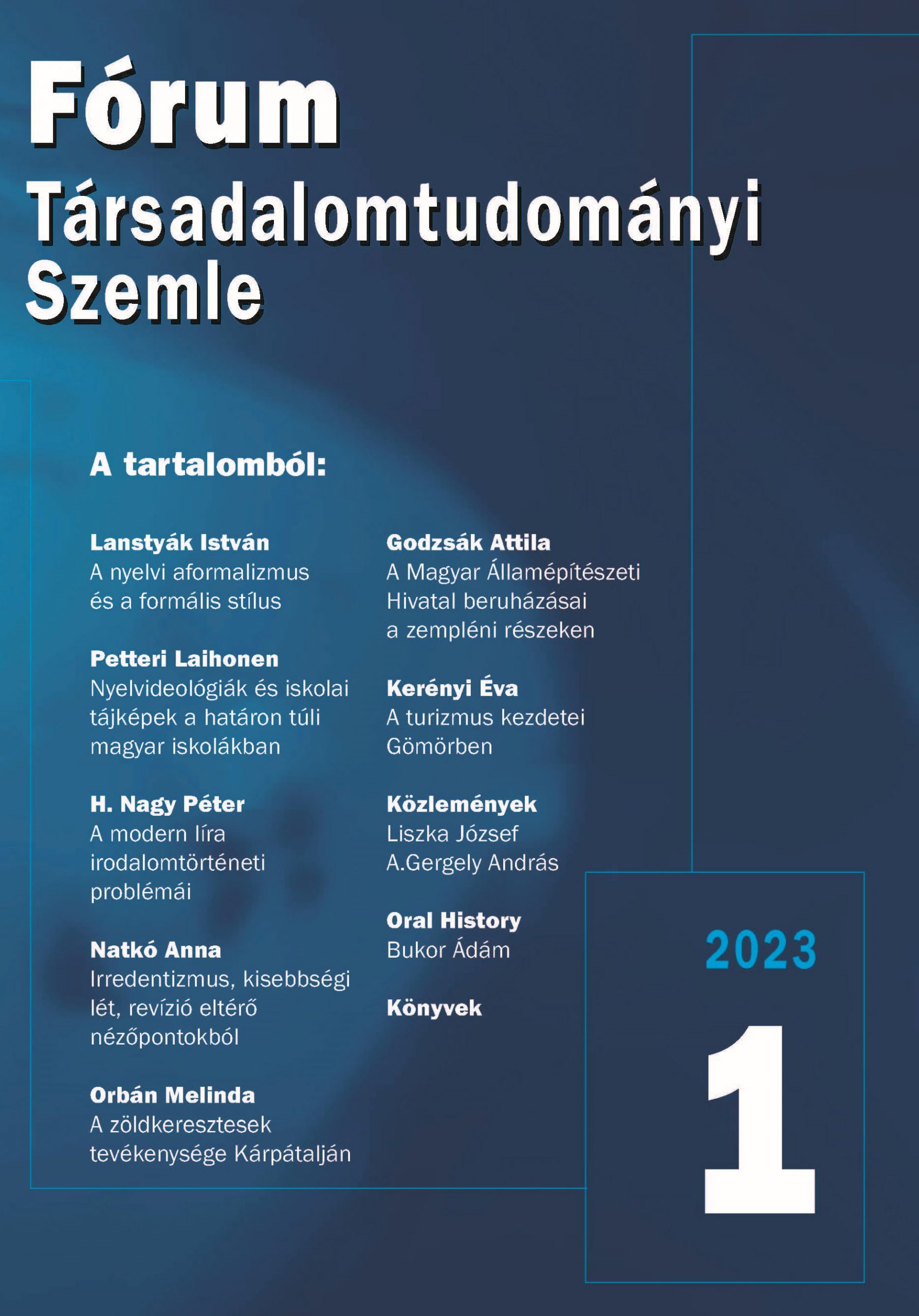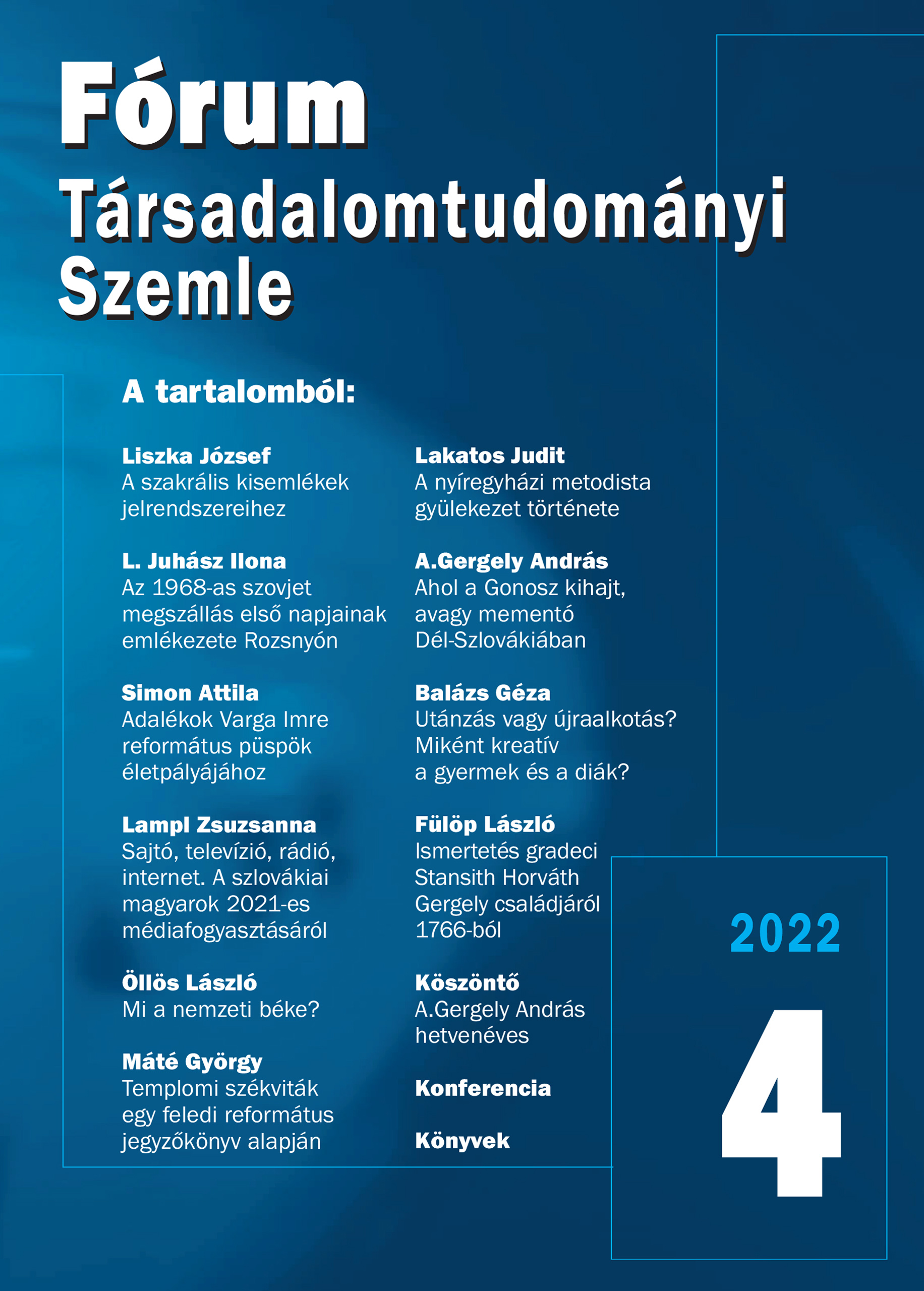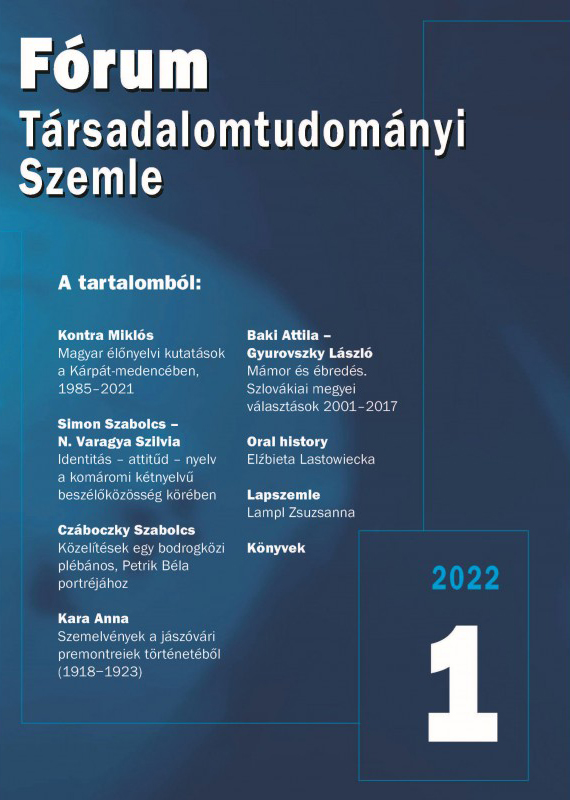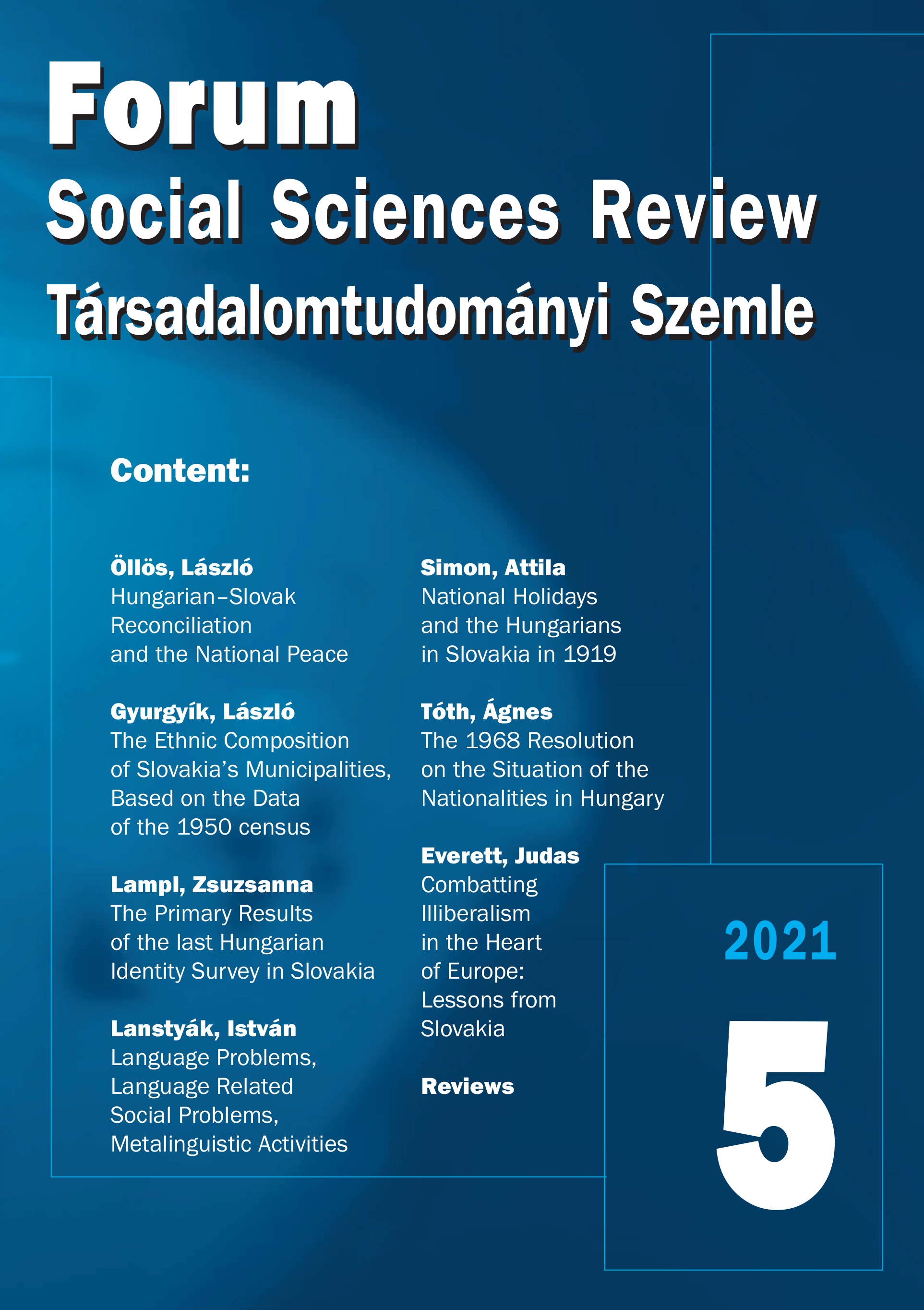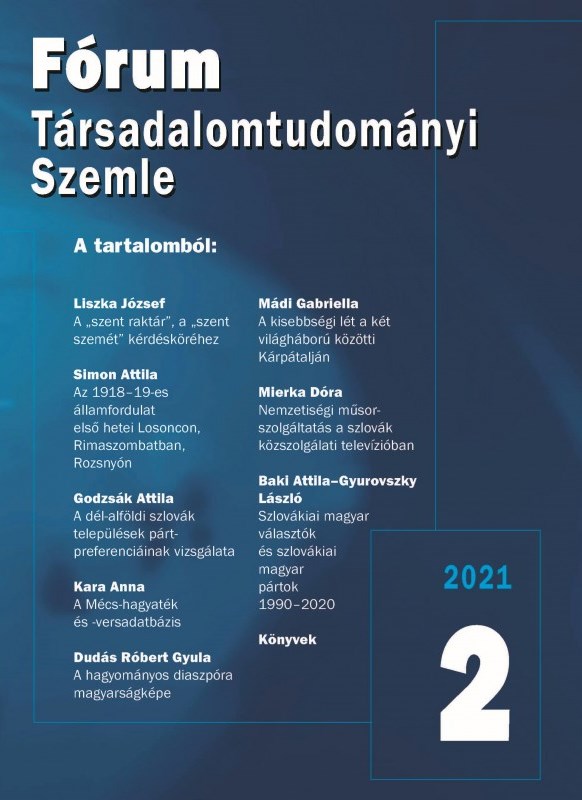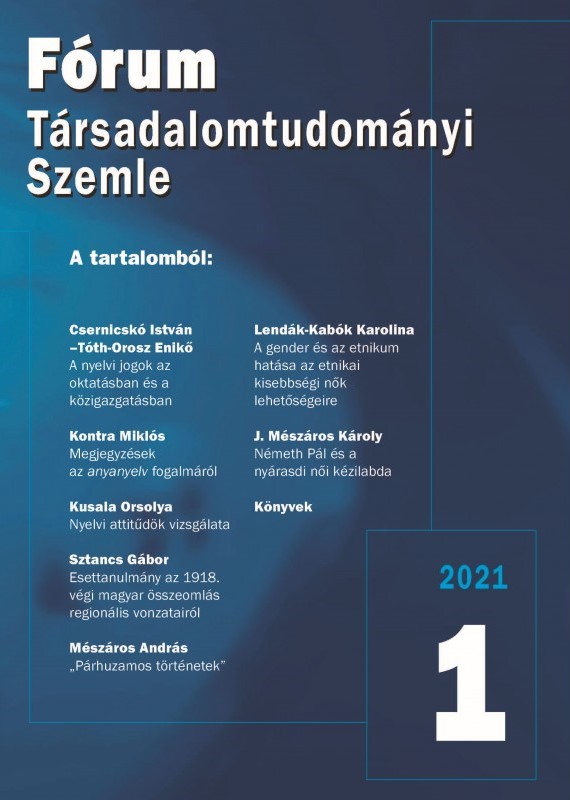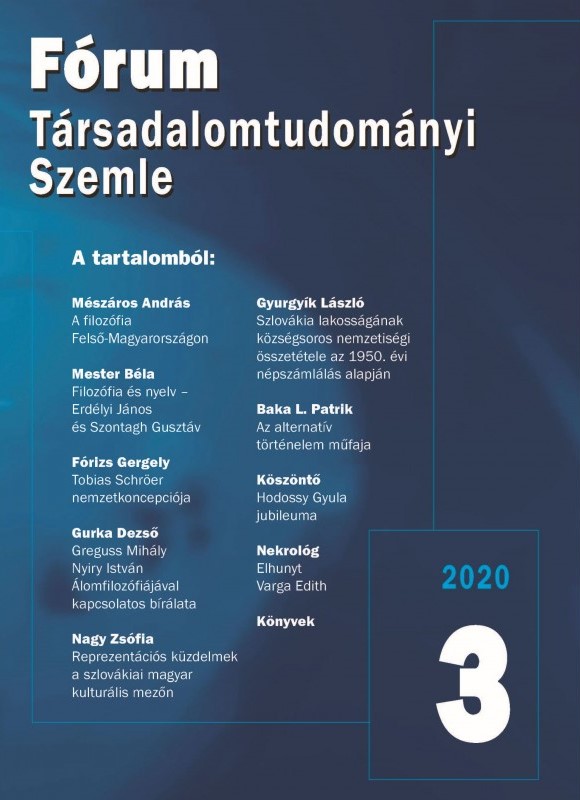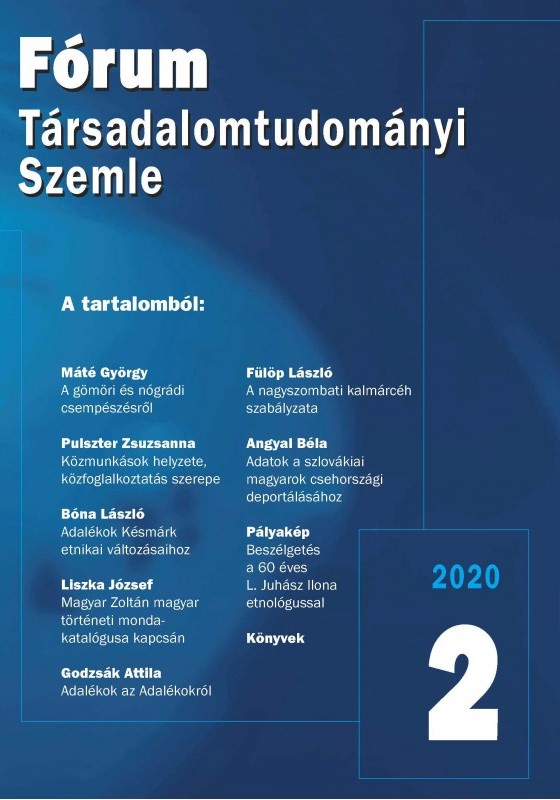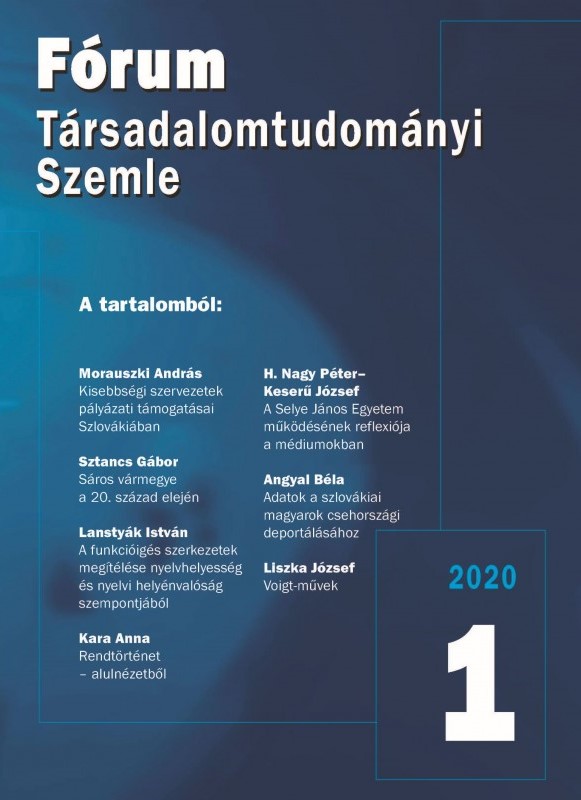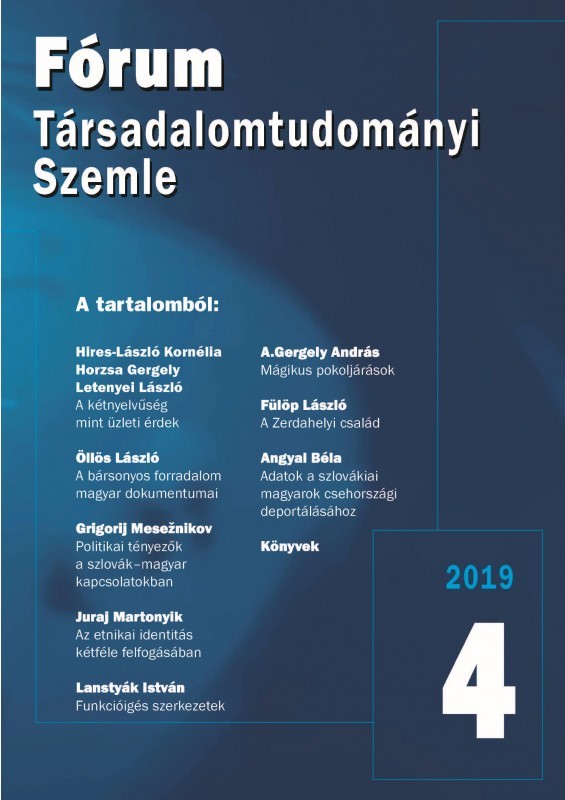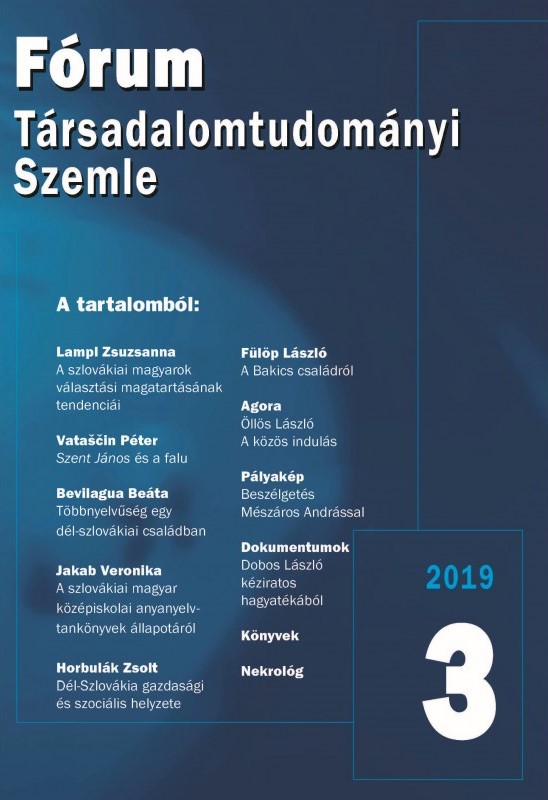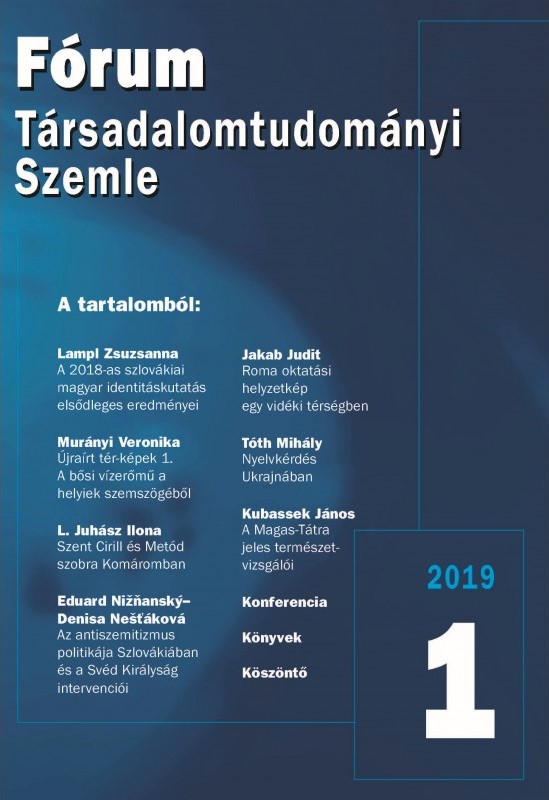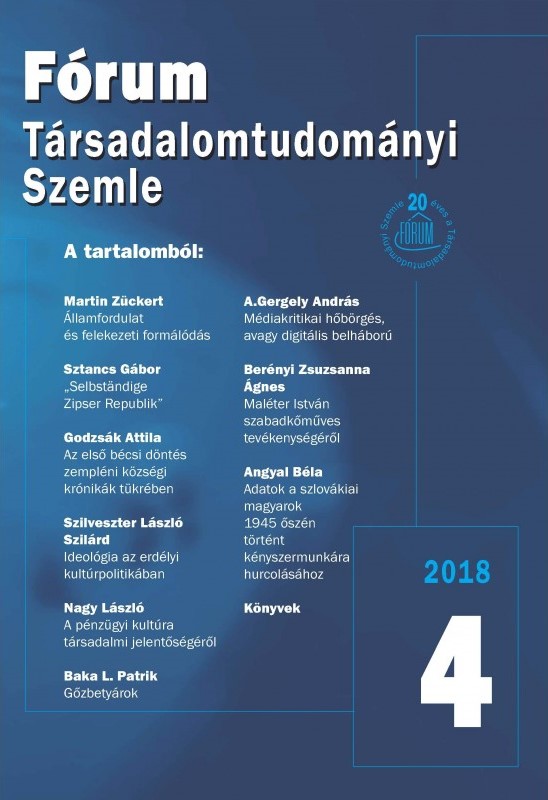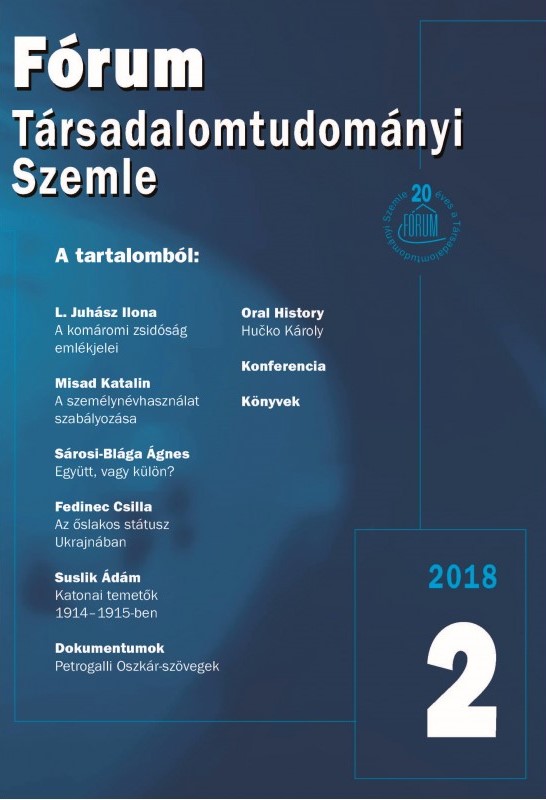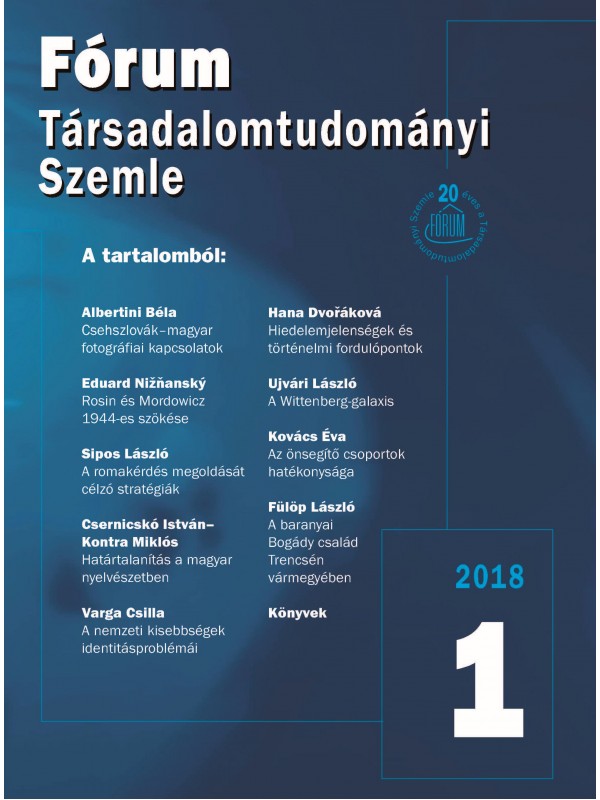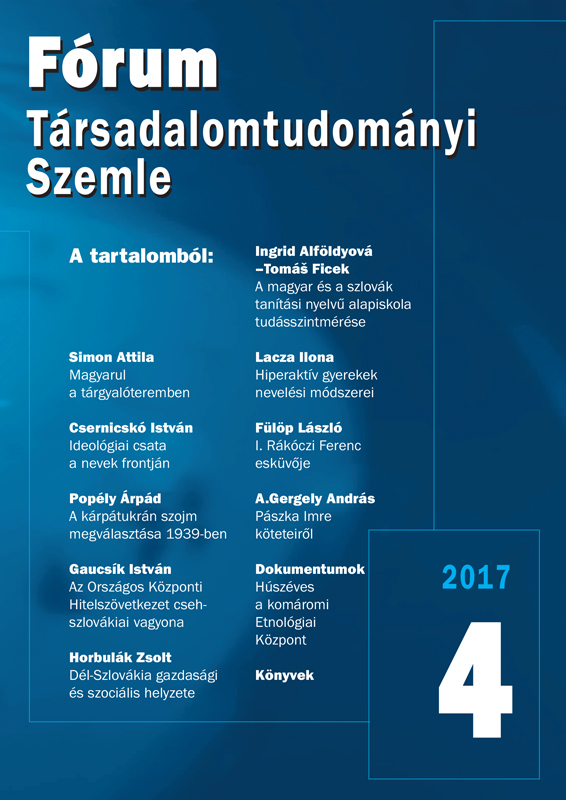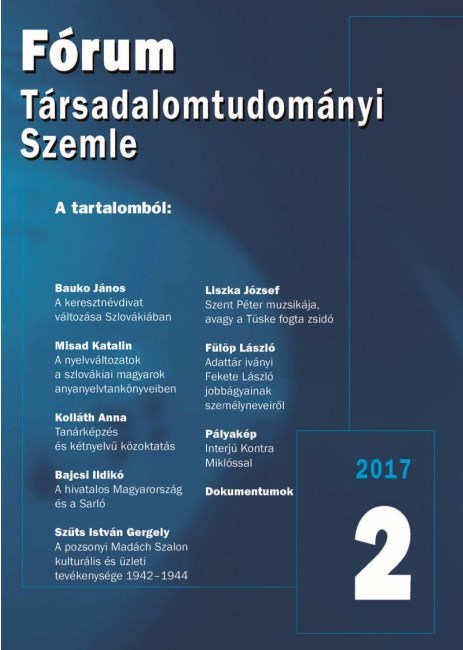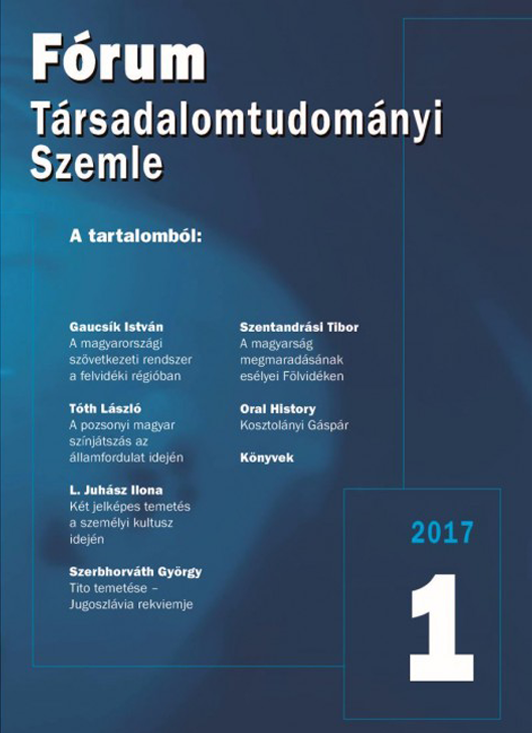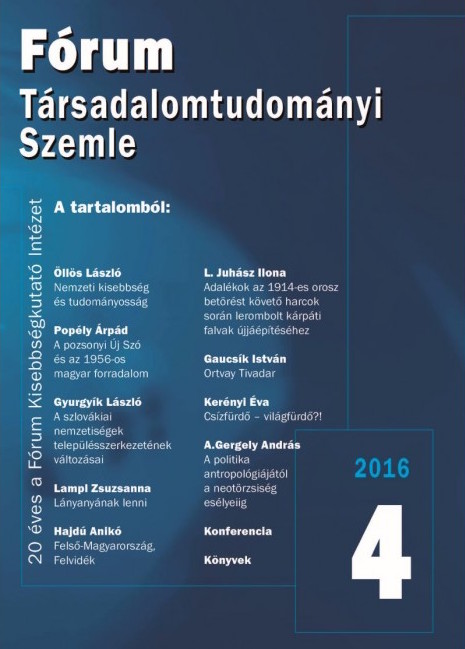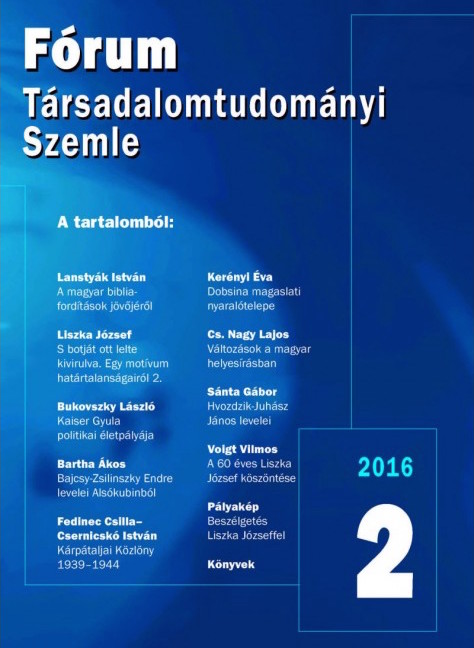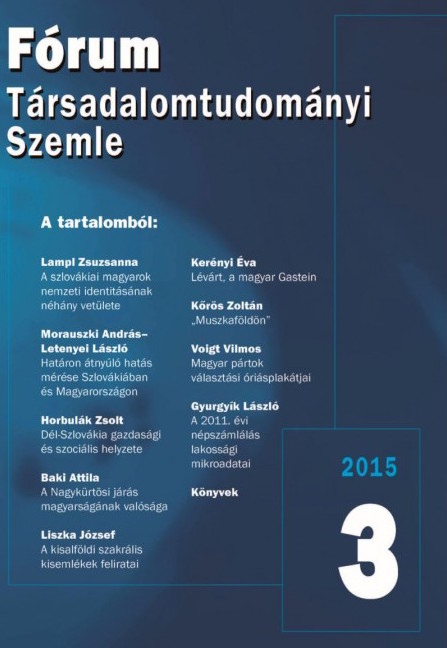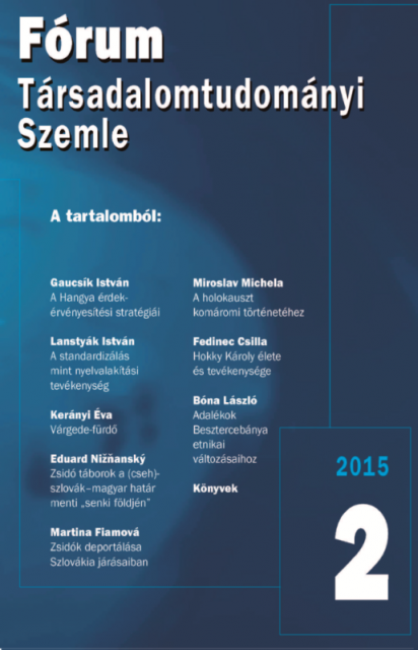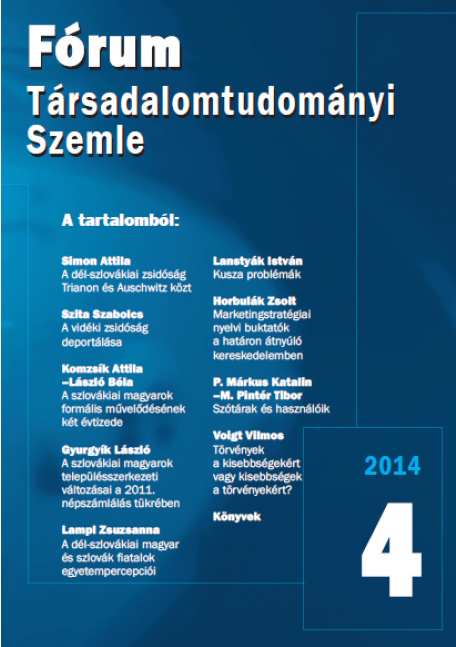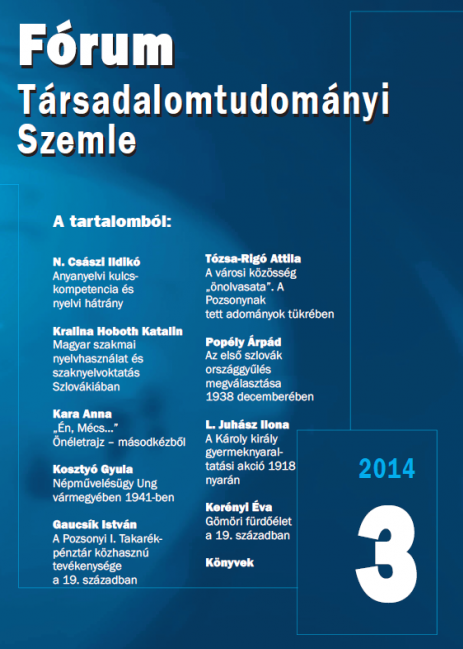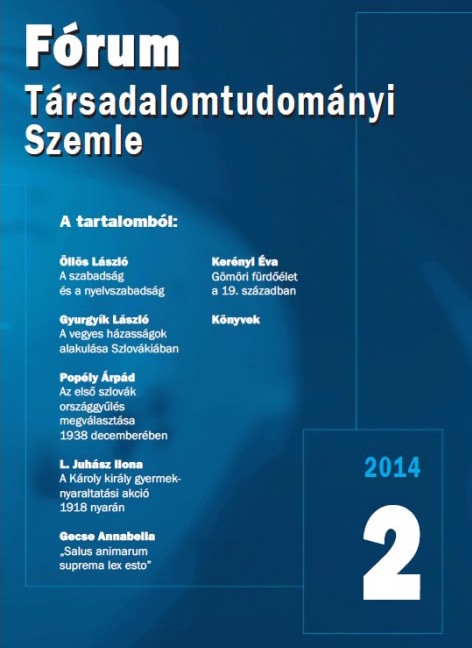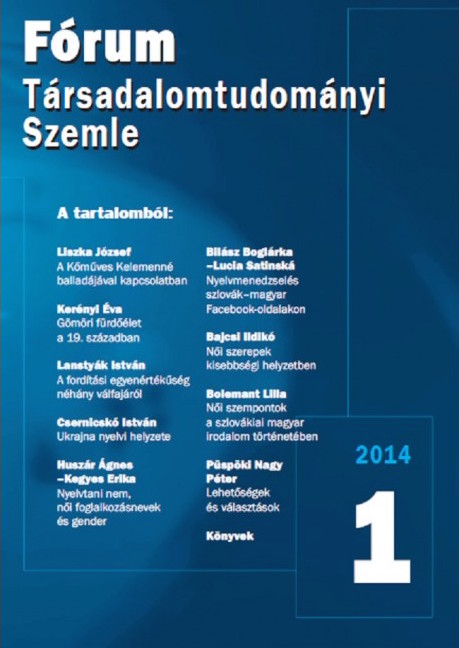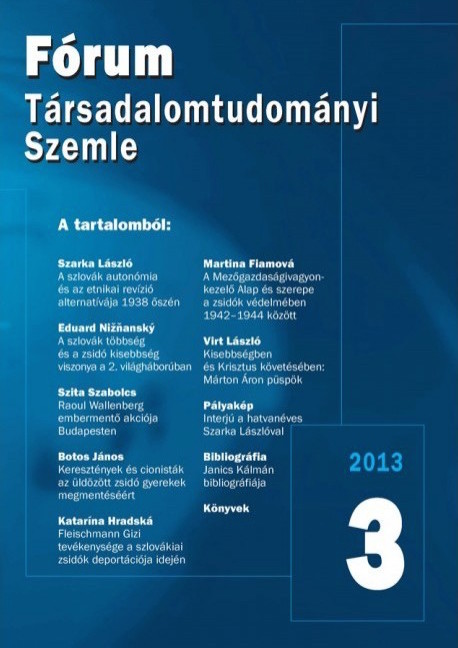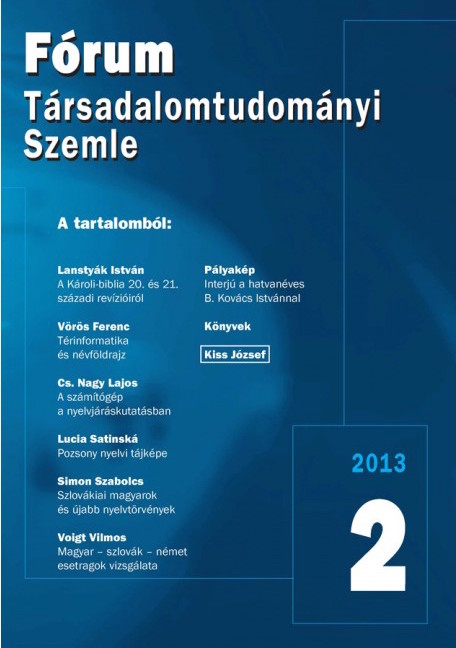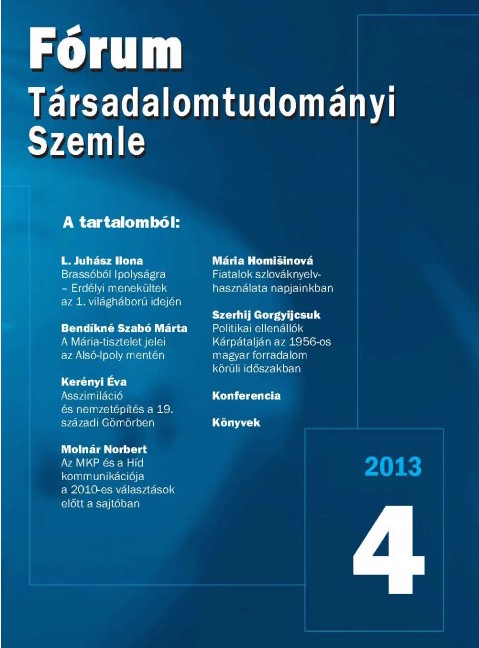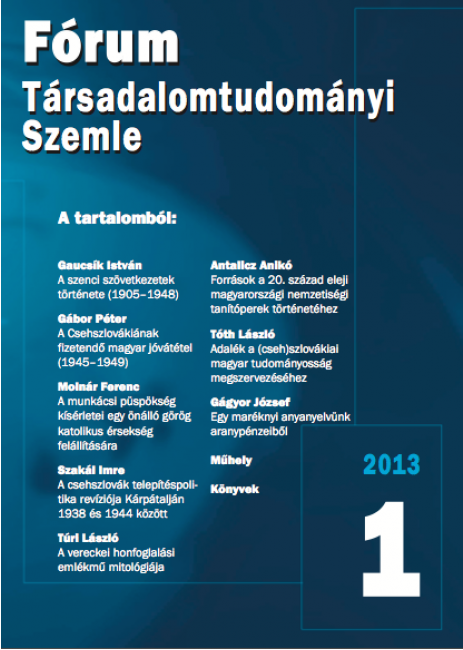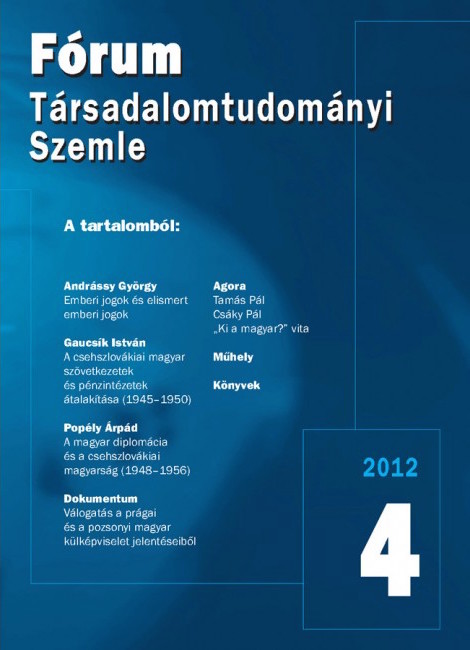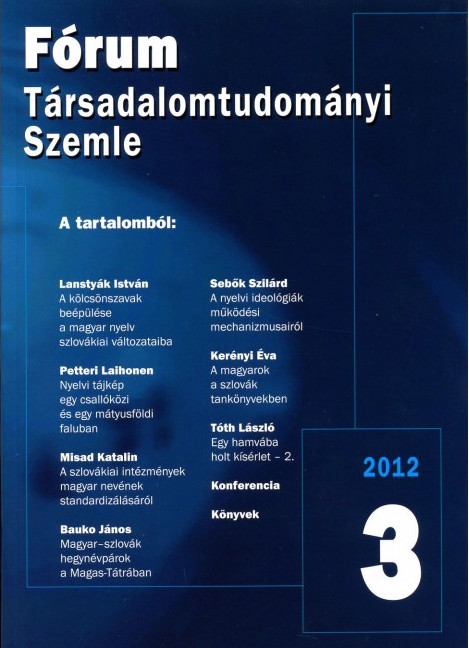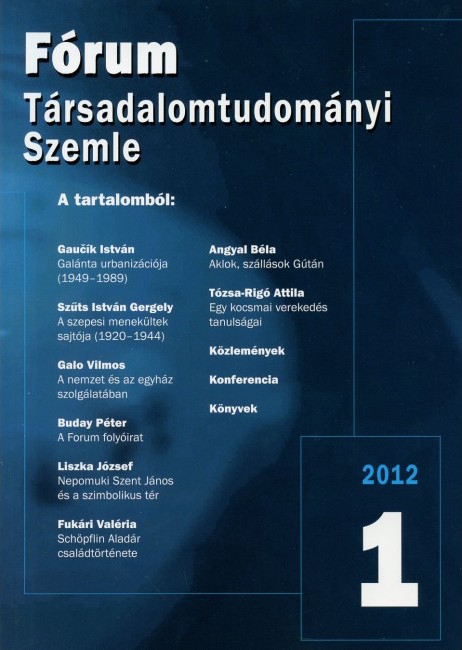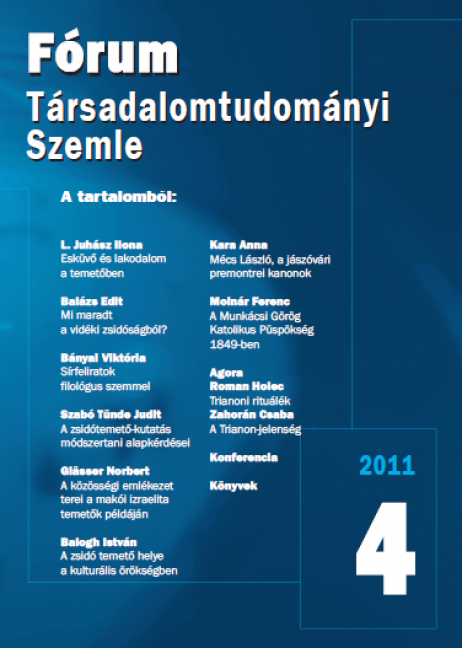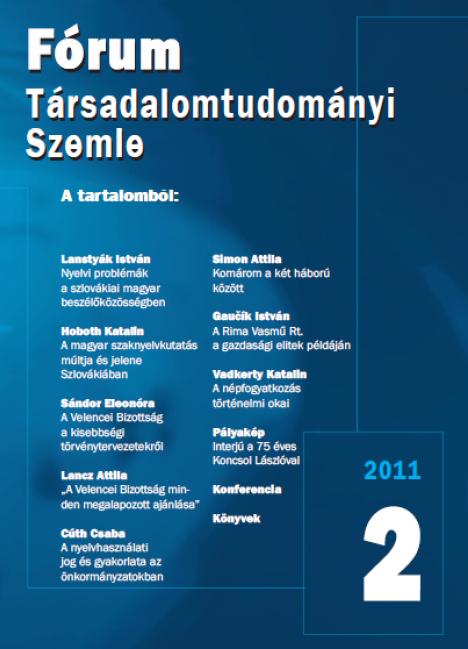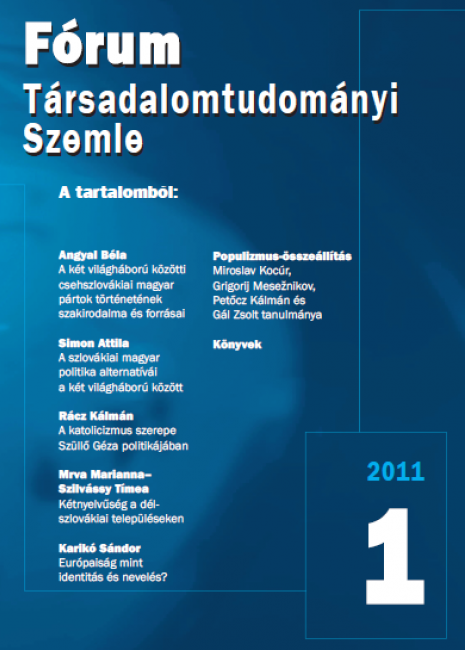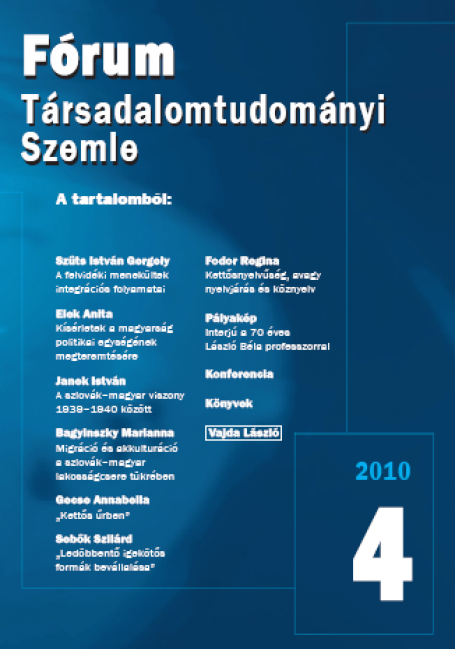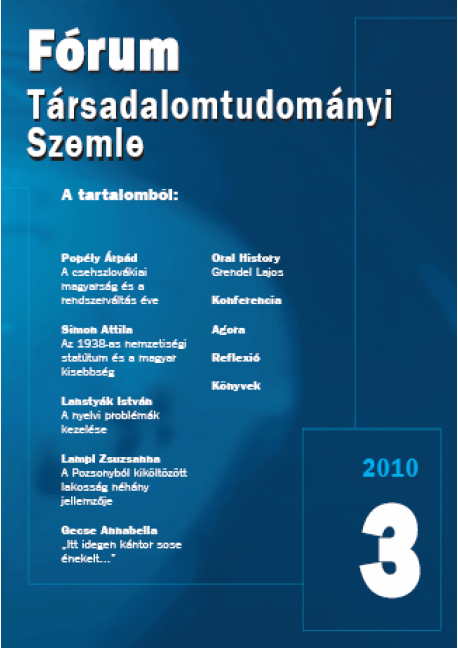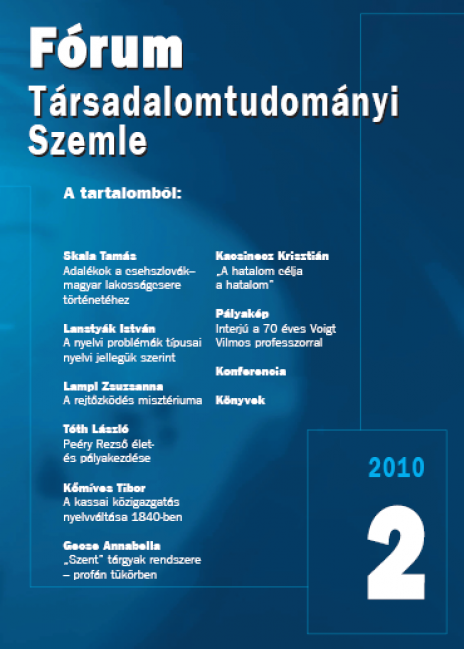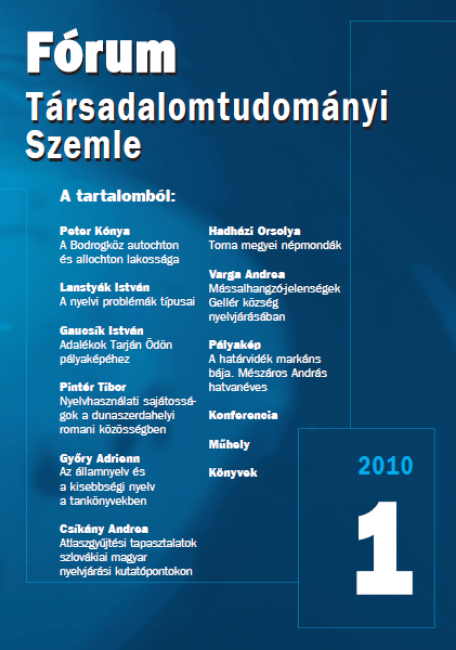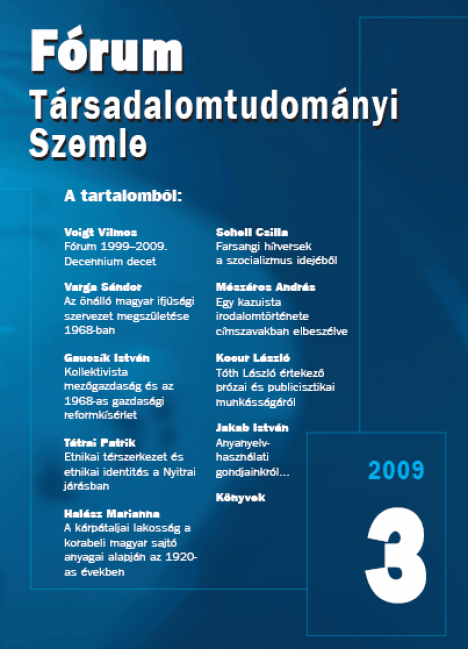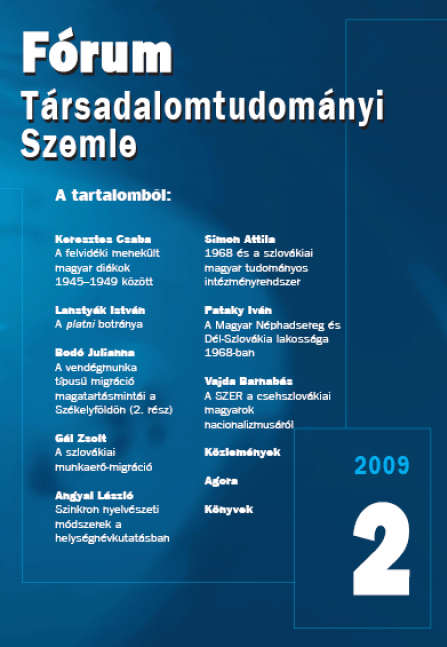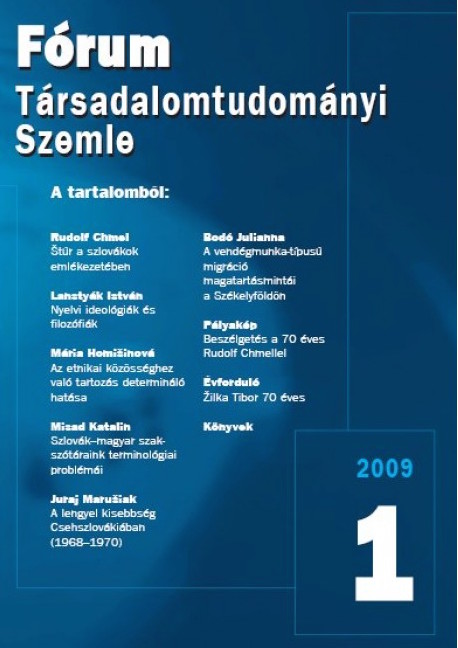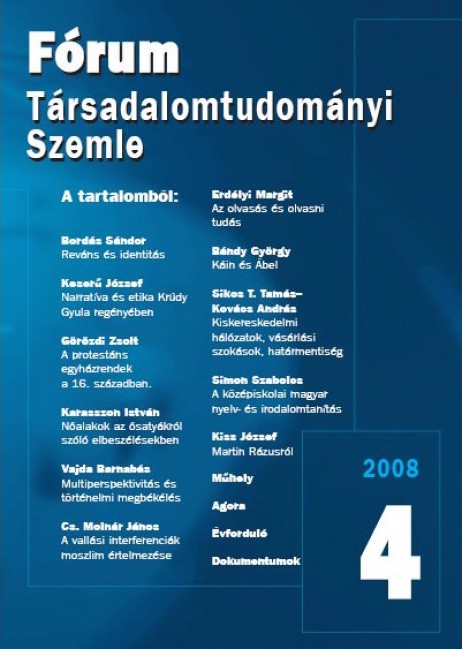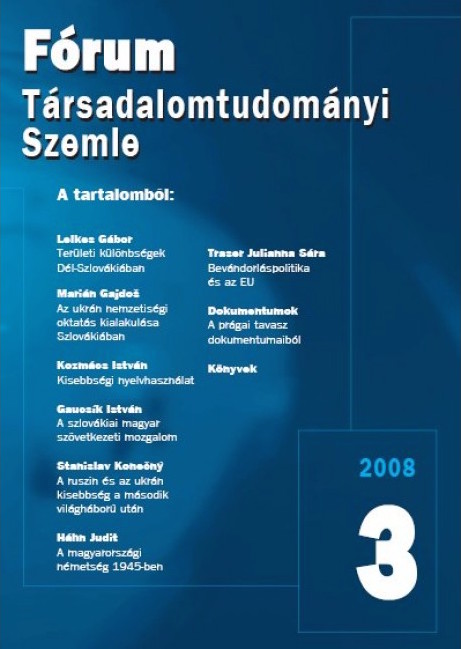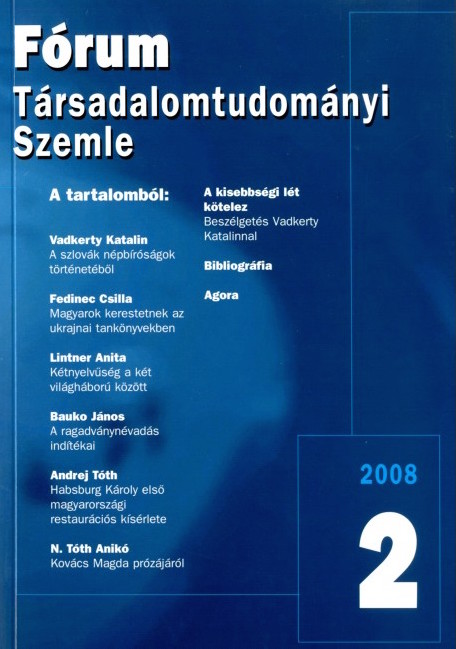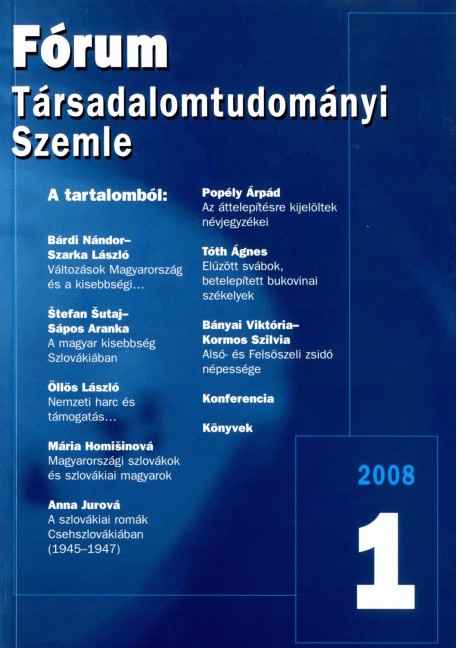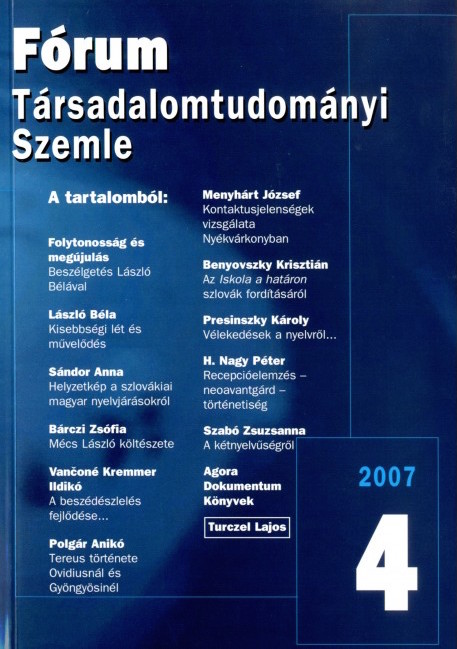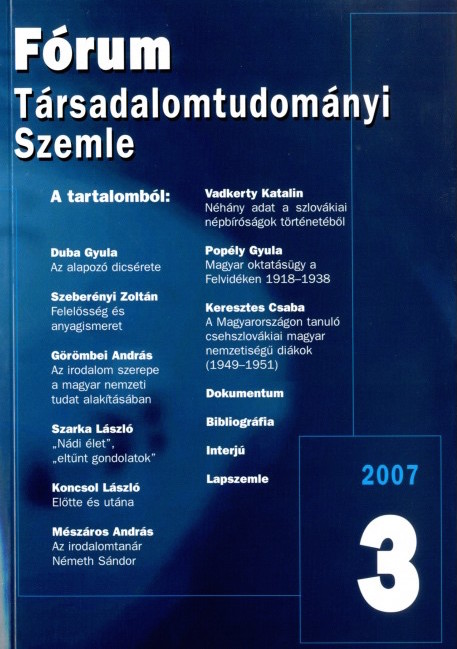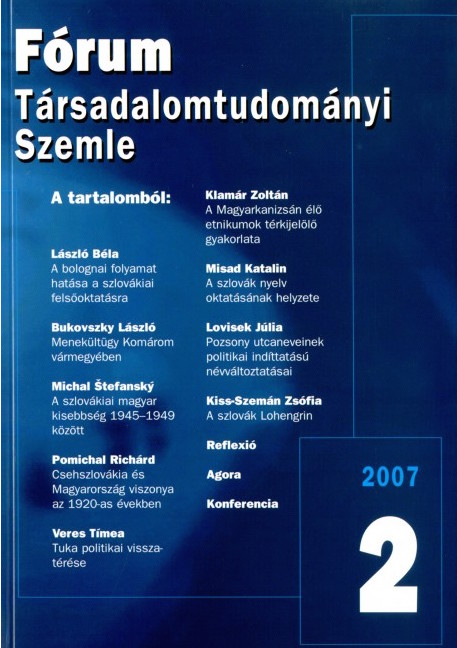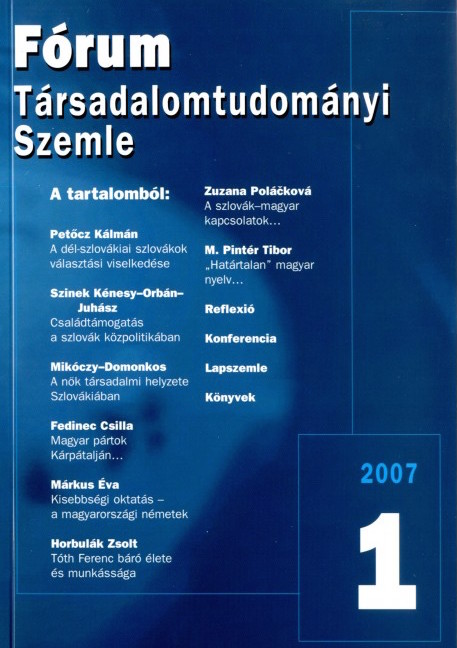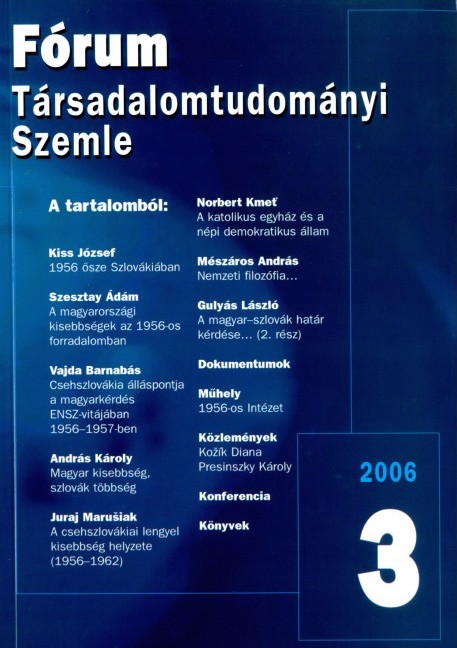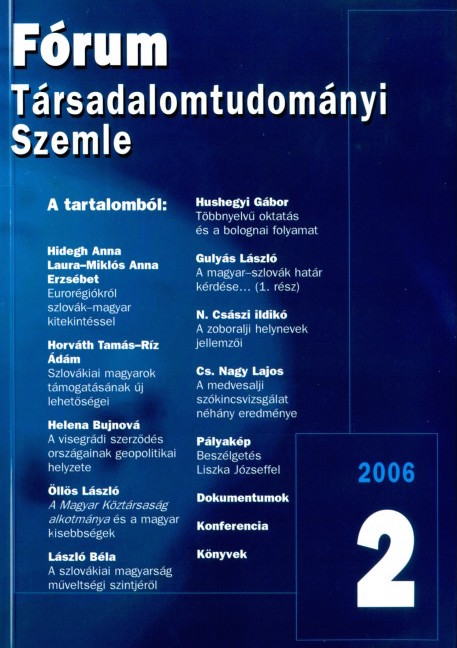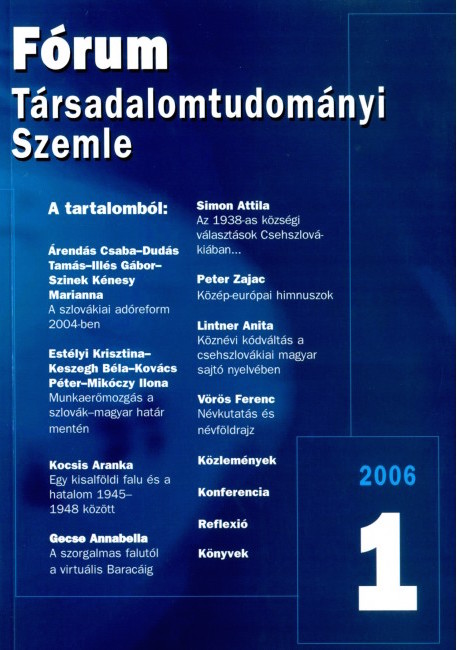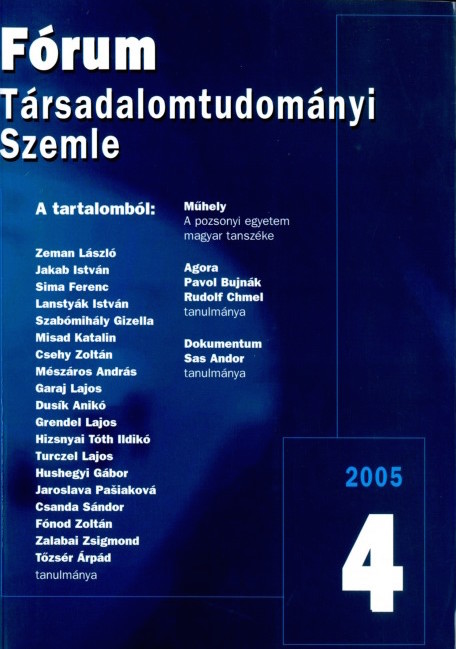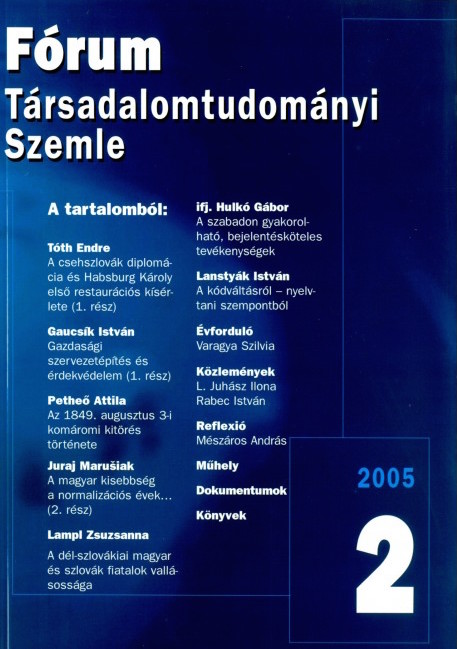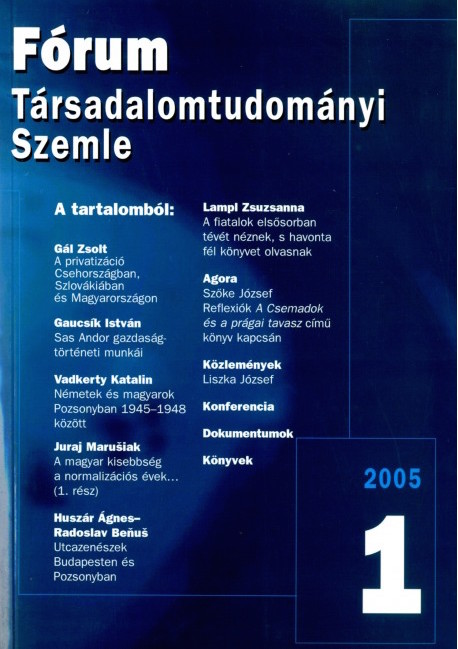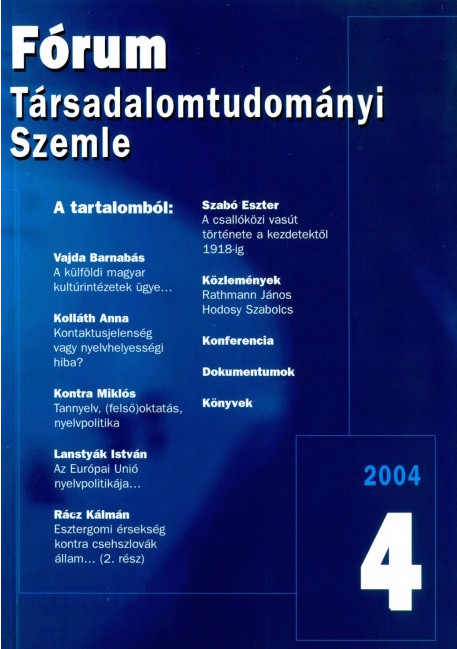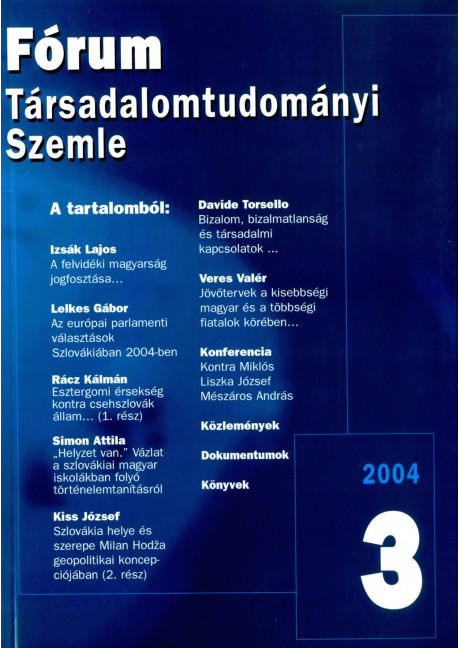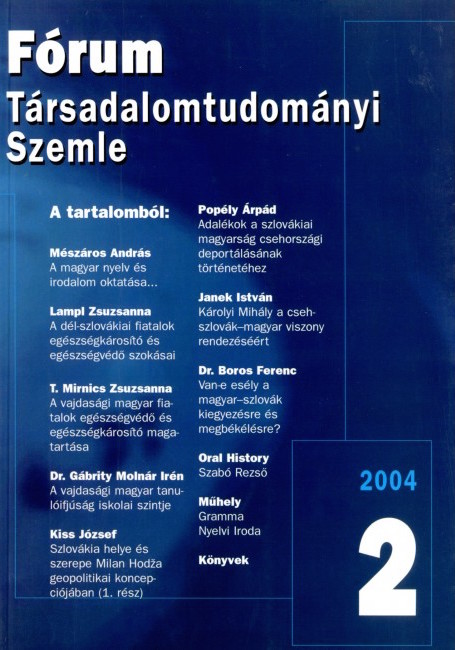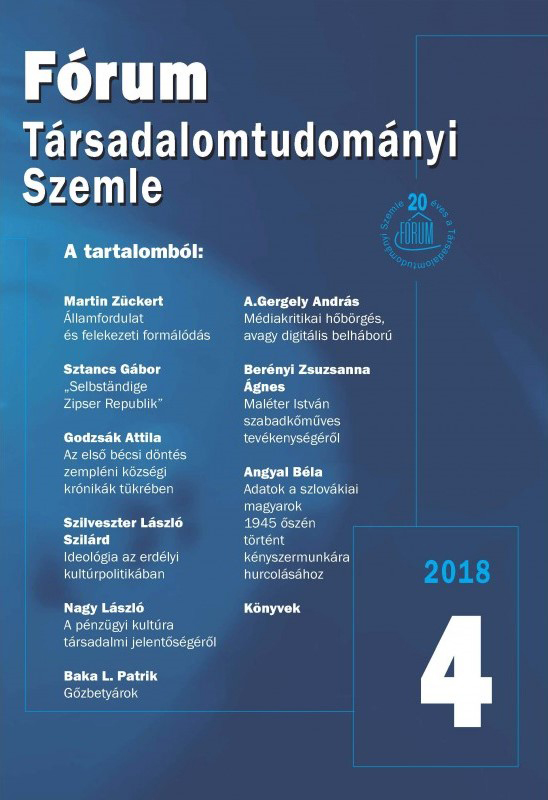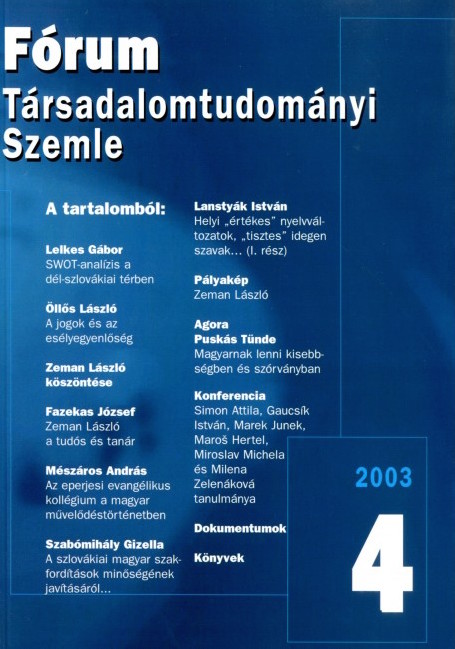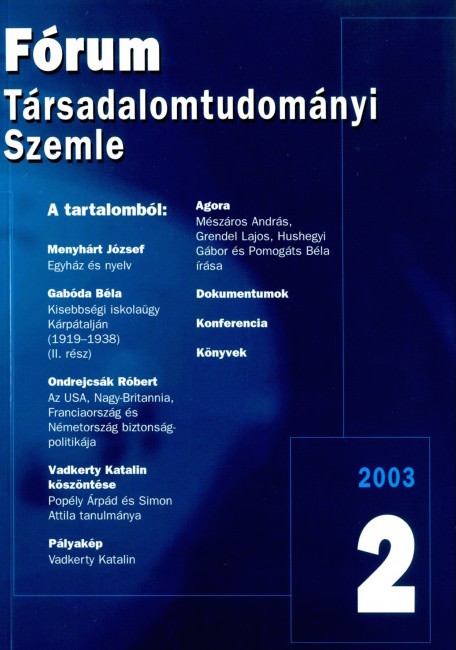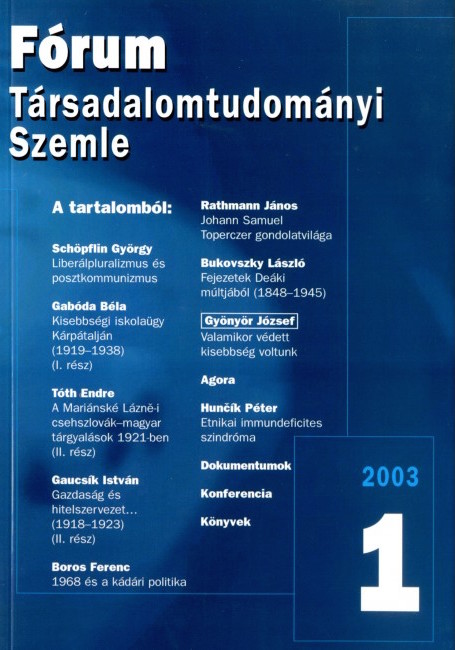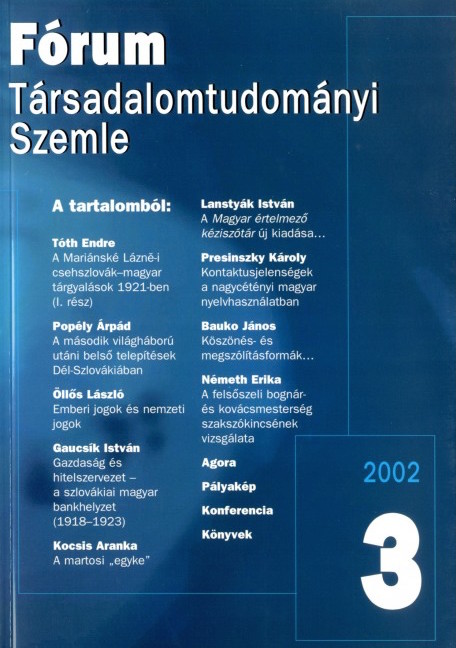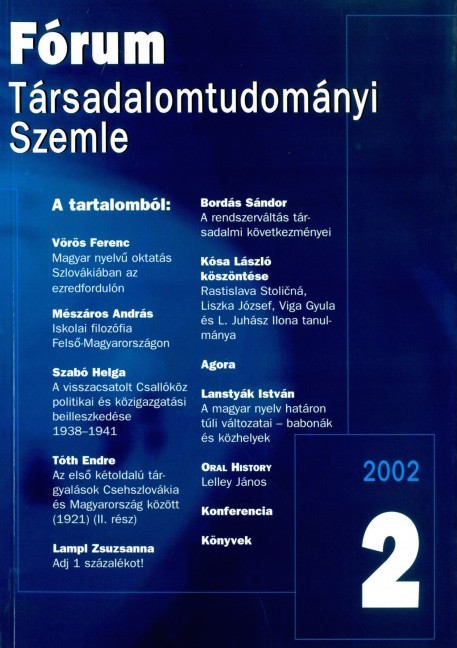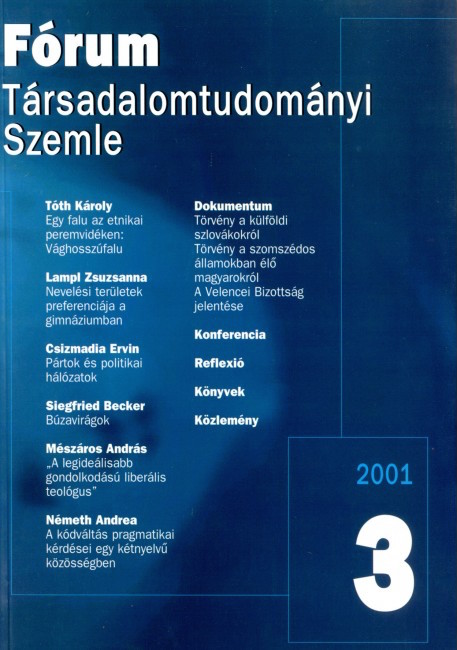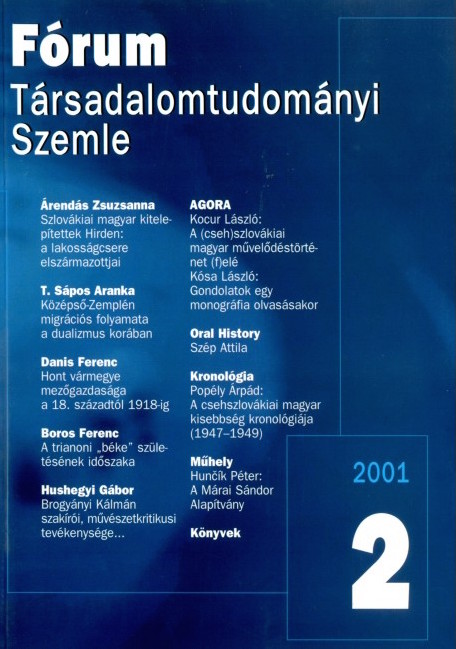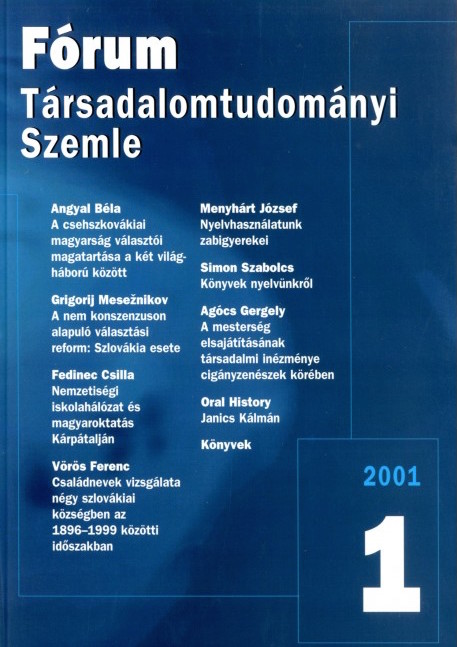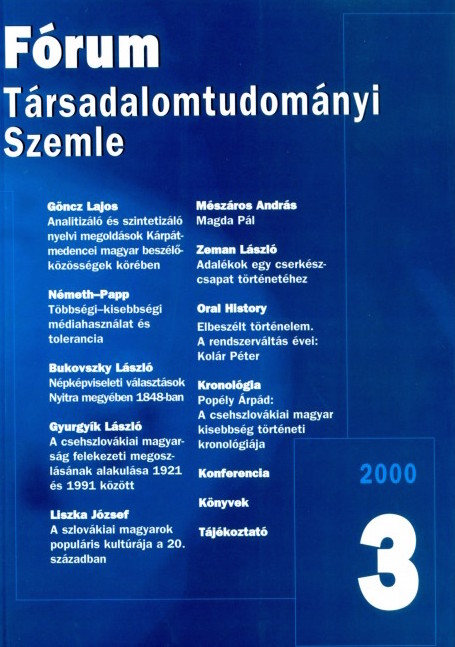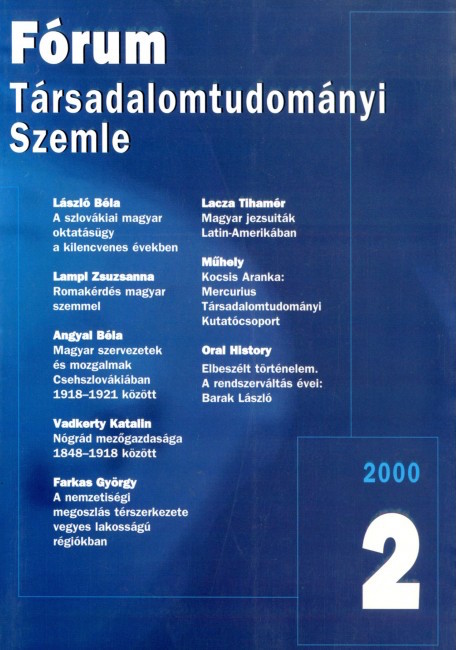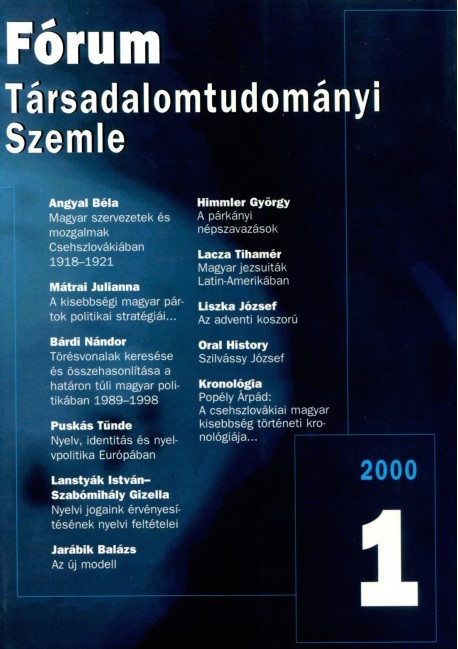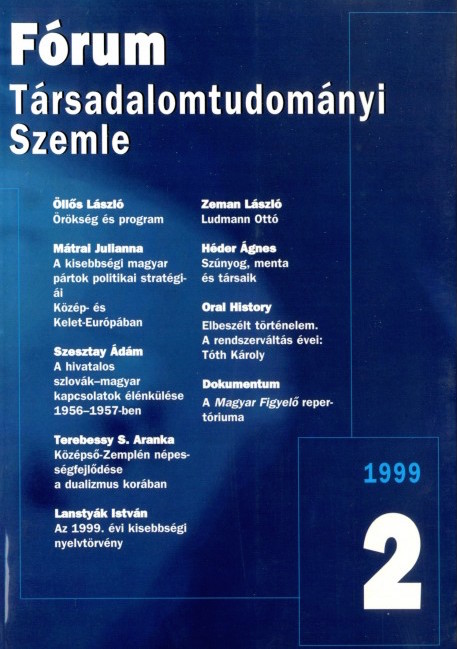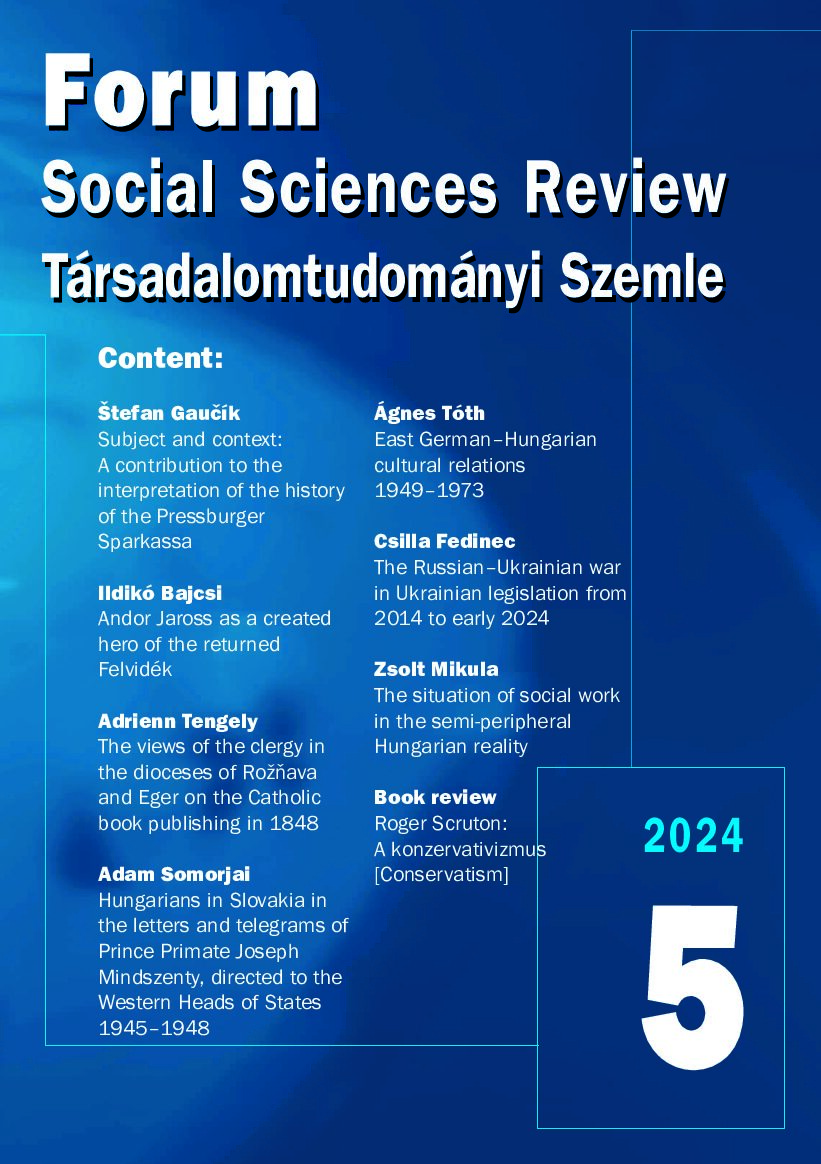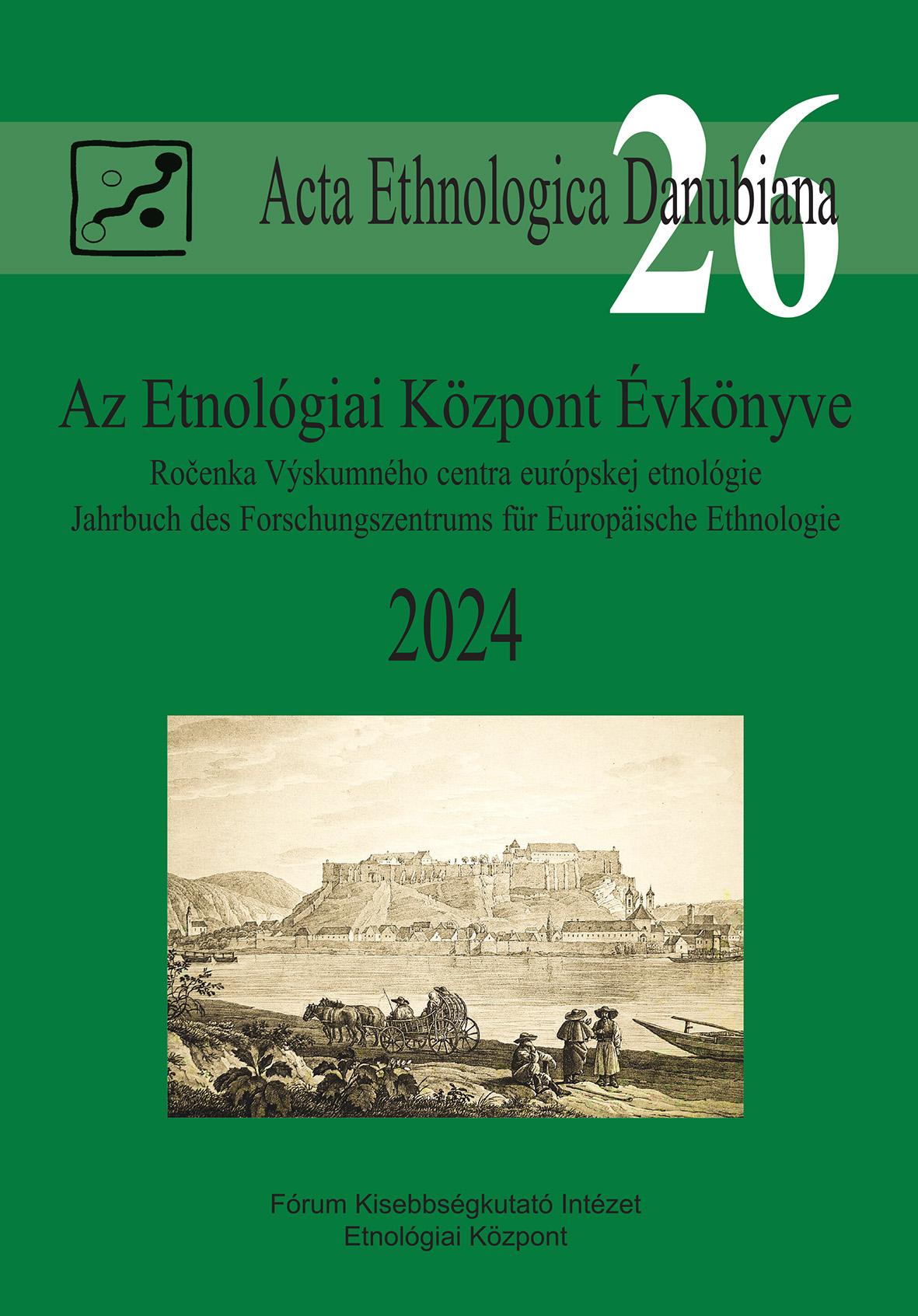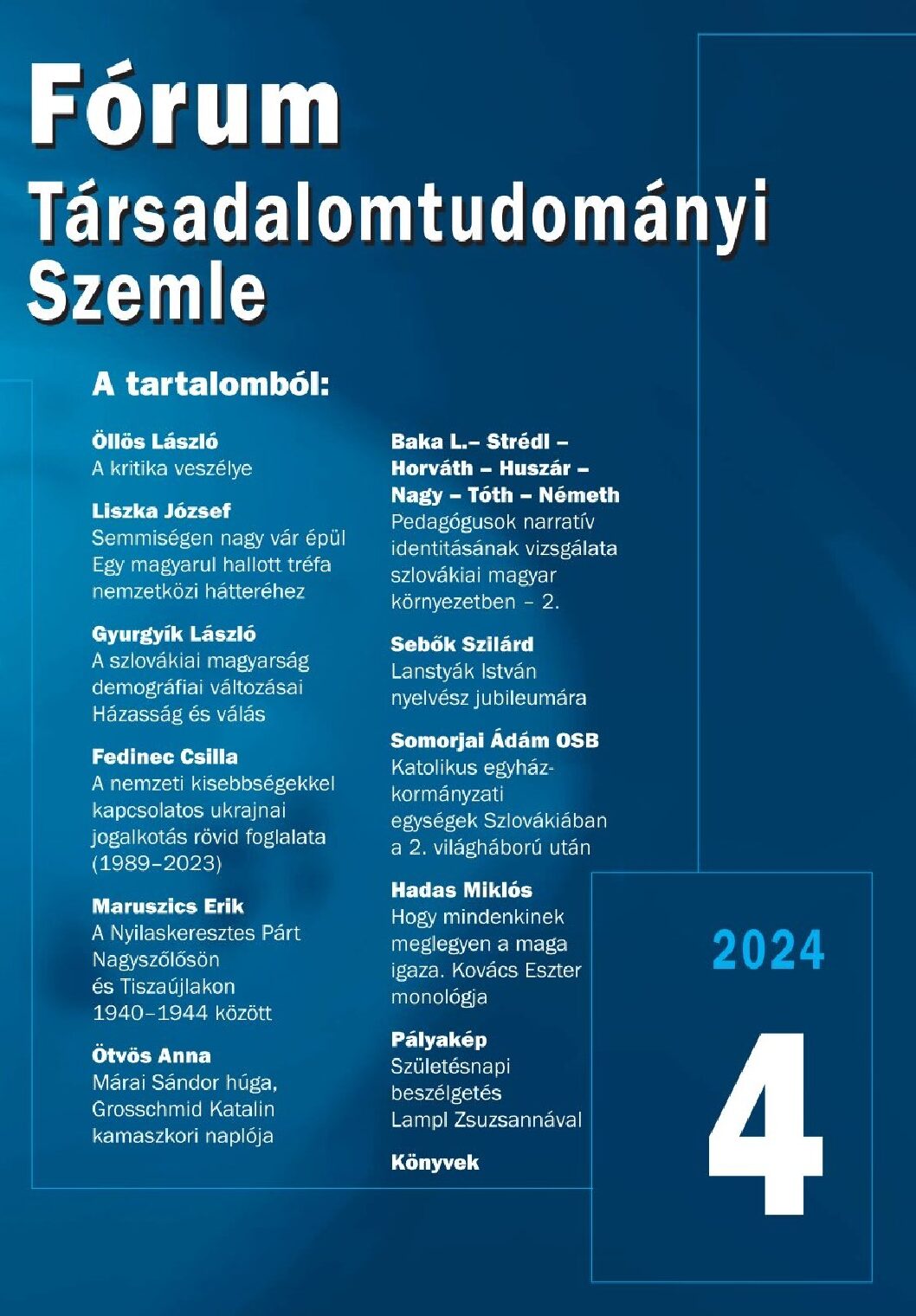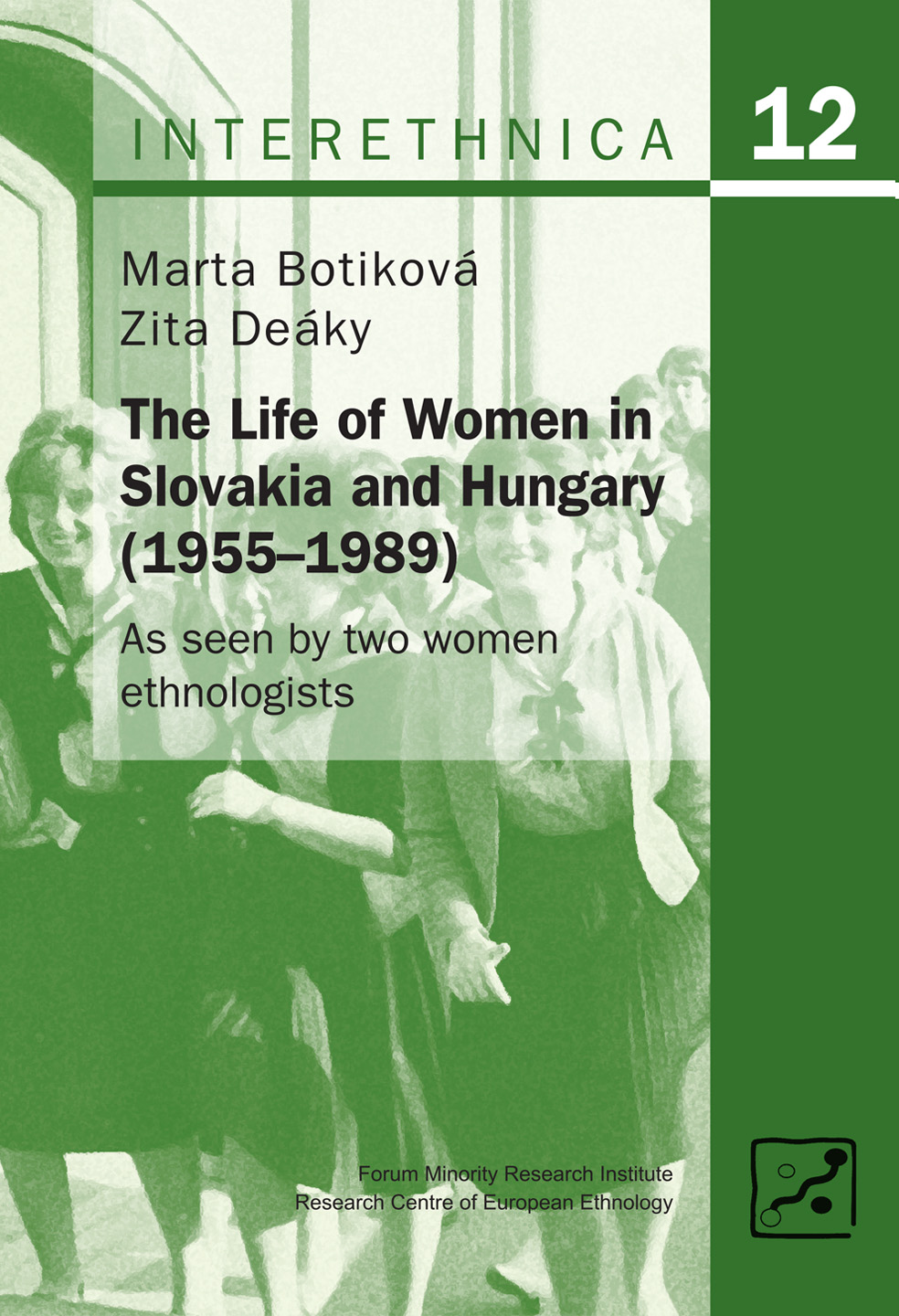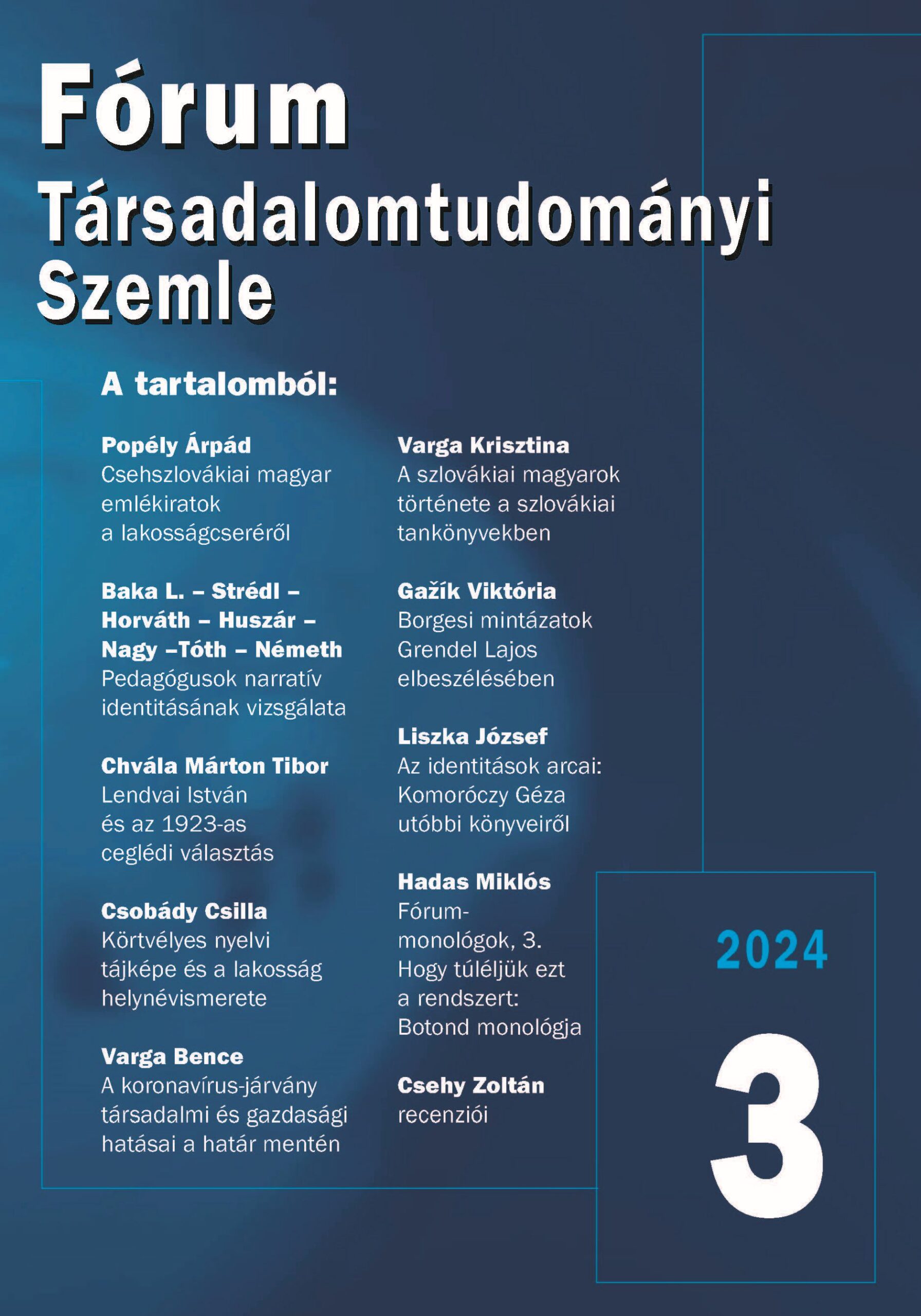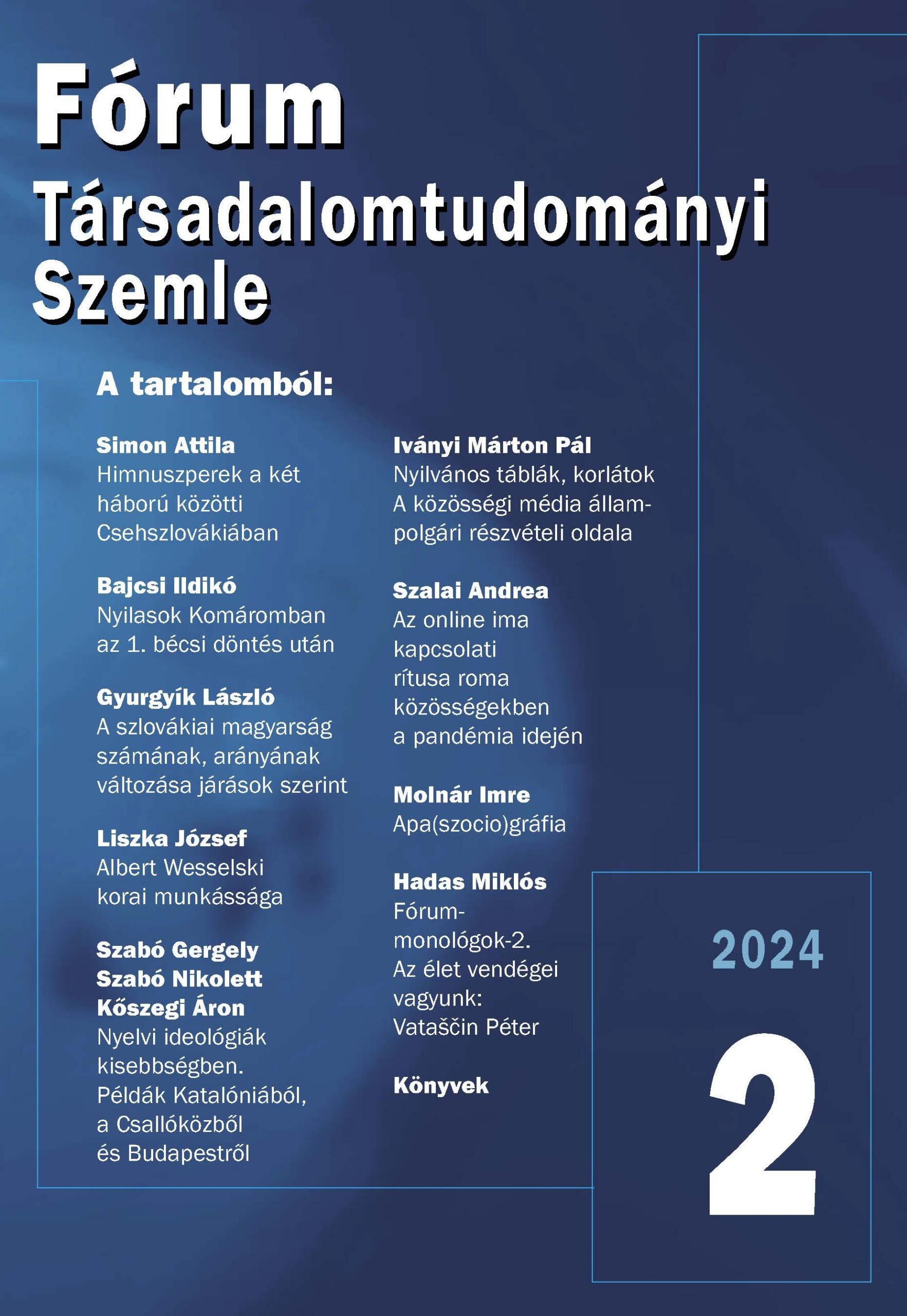The Rise of the Cult of the “Most Famous Czech”. Public Sculptures of St. John Nepomuk in Slovakia in the Light of Changes
The study examines the rise of the cult of St. John Nepomuk, also known as the ‘most famous Czech’, in the area of contemporary Slovakia in the light of public sculptures. From the early 18th century onwards, it looks at the growing popularity of the saint’s statues (and his cult) in the region, broken down into several time periods. On the basis of the relatively large amount of data available to us, it is safe to say that the claims that St John of Nepomuk was a symbol of Czech expansion after 1918 and a means of some kind of Czech ethnic demarcation are not justified. The heyday of the cult of St John Nepomuk in Slovakia, embodied in the erection of statues, lasted from the second half of the 18th century to the end of the 19th century. From 1918 to the present day, only a few new statues can be recorded.
The Jászi Ministry of Nationalities in the Autumn of 1918
Wilsonianism, the principle of the self-determination of nations, which appeared in the last years of the First World War, quickly spread among the politicians, intellectuals and nationalities of the later victorious great powers, the small nations that emerged victorious, and at the same time the politicians, intellectuals and nationalities of the defeated countries. The first Hungarian People’s Republic was born after the defeat of the war, and the Károlyi government and its minister for nationality affairs, Oszkár Jászi, sought to ensure the integrity and independence of the country. In order to preserve these, they put the “ideal of self-determination of nations” on the battlefield. Jászi believed that the ceded territories would be interpreted as a fait accompli” in the peace negotiations and that it would not be possible to enforce the right of the Hungarian side to a referendum. To avoid a fait accompli, he formulated a Hungarian interpretation of “limited national self-determination.” At the end of October and beginning of November 1918, the ministry in charge of coordinating the self-determination of the nationalities living in Hungary was quickly organised, given the circumstances. The ministry was very active in propaganda, both at home and abroad, especially in relation to the areas and nationalities that wished to secede. It launched propaganda campaigns in the country quite early in favour of preserving Hungarian integrity and applying the principle of plebiscite for the internal separation of nationalities. Most importantly, the Ministry of Nationalities from the outset embraced and encouraged the organisation of regional plebiscites to decide on the affiliation of territories. Gragger’s signature-gathering campaign, impressive even in its torso, played an important role in formulating Jászi’s plebiscite ideas. From the outset, the idea of a plebiscite for the inhabitants of Hungarian and German-majority areas played an important role in the Hungarian government’s preparations for peace. In the final Hungarian peace document, Albert Apponyi also put forward this idea as one of the most powerful arguments for saving the Hungarian majority areas that were condemned to annexation in the draft peace treaties.
Some Aspects of the Change of Sovereignty from the Pen of Two Local Historians of Nové Zámky
In my work, I have examined the works of two local historians of Érsekújvár (Slovak: Nové Zámky), Gyula Vágovits and Kázmér Saskó. In addition to presenting the local historians and their works, I examined three local events related to the change of sovereignty between 1918 and 1920. These were the organisation of resistance in Érsekújvár, the occupation of the town and the toppling of the Kossuth statue. I examined not only the way the two authors present these events, but also the extent to which their interpretations correspond to reality, i.e. to what extent their interpretations could be considered plausible on the basis of archival sources. My work will also show how and why the narratives of the works differ, and will correct some local events that have been misinterpreted.
Position of the Jewish Minority in the First Czechoslovak Republic with an Emphasis on the Slovak Territory
The text can be divided into two parts: in the first part, we focus on the principles of protection of minority rights after the First World War which were addressed by the Paris Peace Conference (1919), and in the second part, we deal with the Jewish minority in Slovakia within the Czechoslovak Republic. According to the original proposals, the protection of racial, national, and religious minorities was to be incorporated in the statute of the League of Nations, but this concept was not accepted. Subsequently, the protection of minorities was included in peace treaties with defeated and newly formed states. The Czechoslovak Republic was committed to provide protection of life and liberty to all citizens, regardless of their origin, citizenship, language, race or religion. The Republic agreed that regulations concerning persons belonging to racial, religious or linguistic minorities were of international coverage and guarantees of the League of Nations. With its constitution and laws, the CSR created a framework within which individual minorities built both their relationship with the republic and their own identity in the new state. Further in the text there is a focus on the Jewish minority in Slovakia within the First Czechoslovak Republic. The Republic was among the first in the world to allow declaring Jewish nationality. This section focuses on the various layers of Jewish identity: religion, nation, language, relationship to Zionism, and political organization. The Republic enabled the Jews to live a full religious, social, political and cultural life.
The Domestic Political Activities of Géza Szüllő from the first Vienna Award to the May 1939 elections
Géza Szüllő was the only one of the 17 members of the Czechoslovak National Assembly – mainly from the United Hungarian Party – to be left out from the Hungarian House of Representatives after the First Vienna Award. The two groups within the Party of National Unity – the conservative and the extreme right-wing – formed mainly for foreign policy reasons, and at the beginning of 1939 they also separated institutionally. Szüllő was a member of the former group, as opposed to the 17 appointed deputies, and thanks to his time in the National Assembly in Czechoslovakia he had enough authority to be considered by the conservative group as a candidate for the post of minister without portfolio for southern Slovakia, as opposed to Jaros, who supported the extreme right-wing policies of the Imrédy government. In this short period of a few months, the two politicians were engaged in a domestic political contest for party political positions, for the post of minister without portfolio for Felvidék, for determining the appointment of the 17 members of the House of Representatives representing the re-accessed territory, for changing the stability of the Imrédy government, or for changing the wording of the second Jewish law. Both the far-right and the conservative elite hoped for a continuation of the revision, and in this situation the role of Nazi Germany was enhanced. Within a few months, all of Szüllő´s attempts were at best partial, at worst unsuccessful: this was typical of the efforts of the conservative political elite.
The Social and Linguistic Identification of the Sinto Gypsies in Written Sources and Community Practices
The Sinti are a minority of the Gypsy population in Hungary, but their cultural, linguistic and social characteristics make them a well-identifiable group among other Romani-speaking Gypsy groups, different from the majority. In the first part of this paper, we present the sources dealing with the Sinti from a scientific-historical perspective, mainly from a linguistic point of view, from the 16th century to the present day, describing the different names of the Sinti and the historical and etymological dilemmas related to them. Then, drawing on our fieldwork data, we analyse the external and internal ethnonyms, surnames and related strategies that are important tools for the social and linguistic (self-)identification of the Hungarian Sinti.



